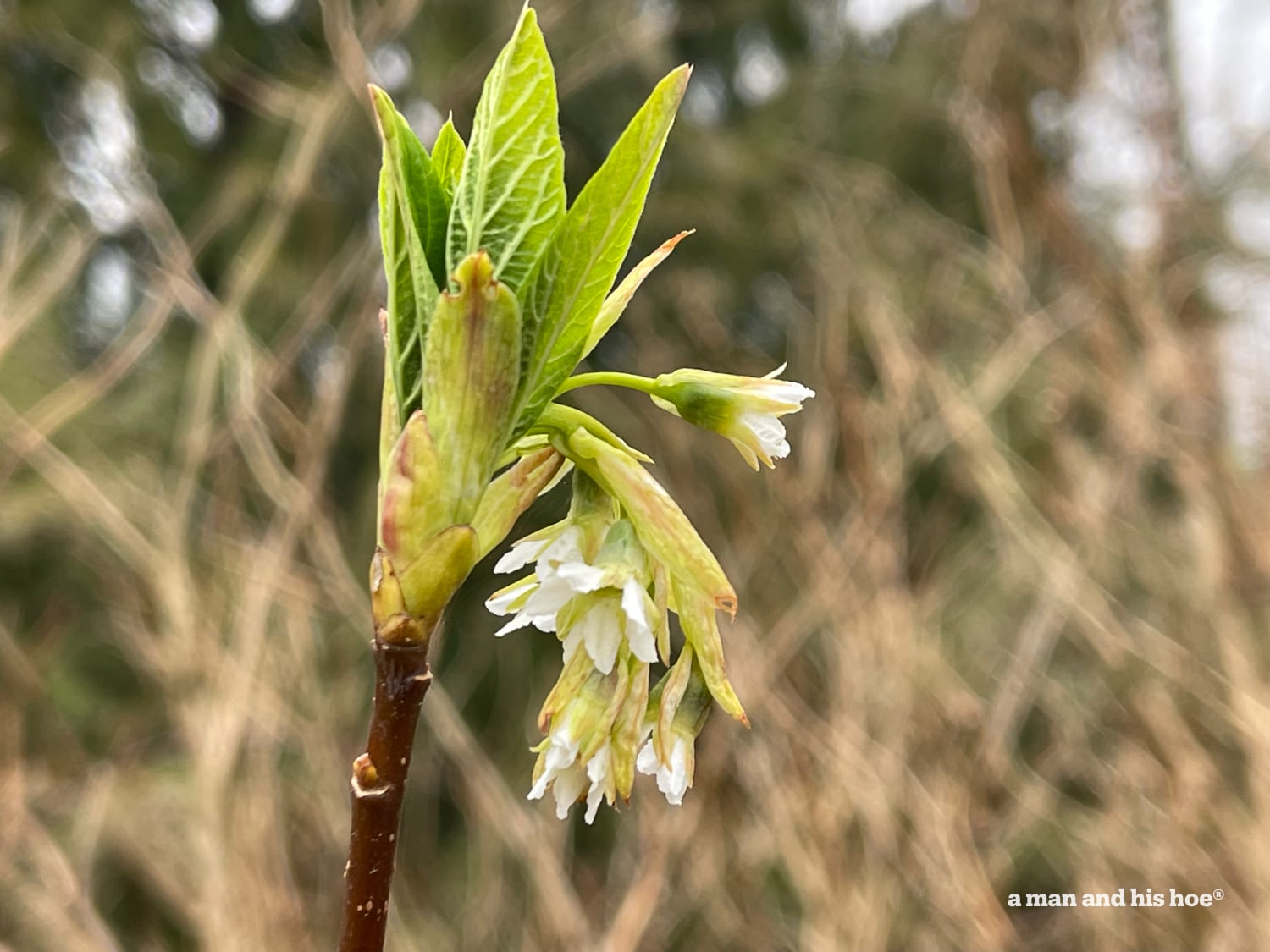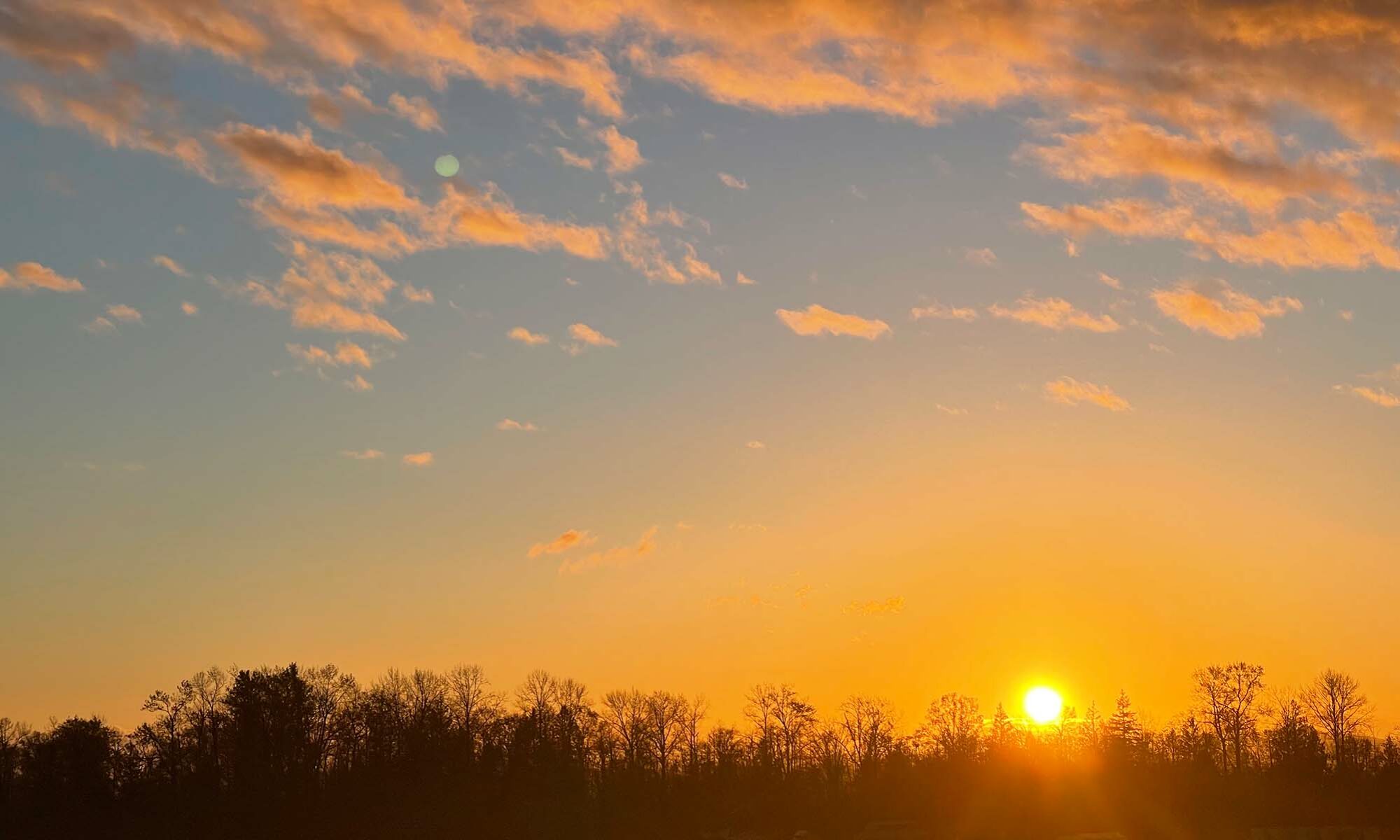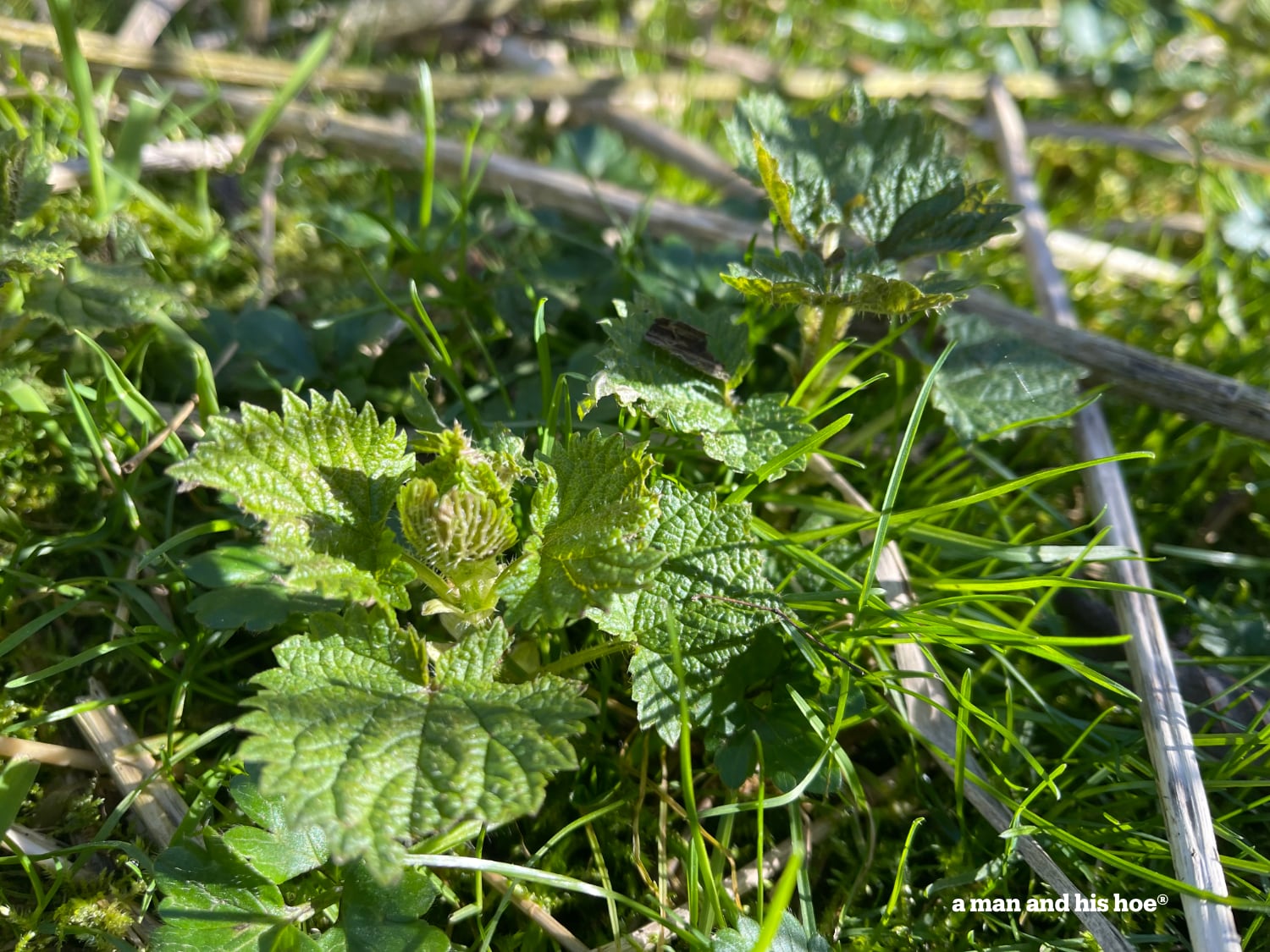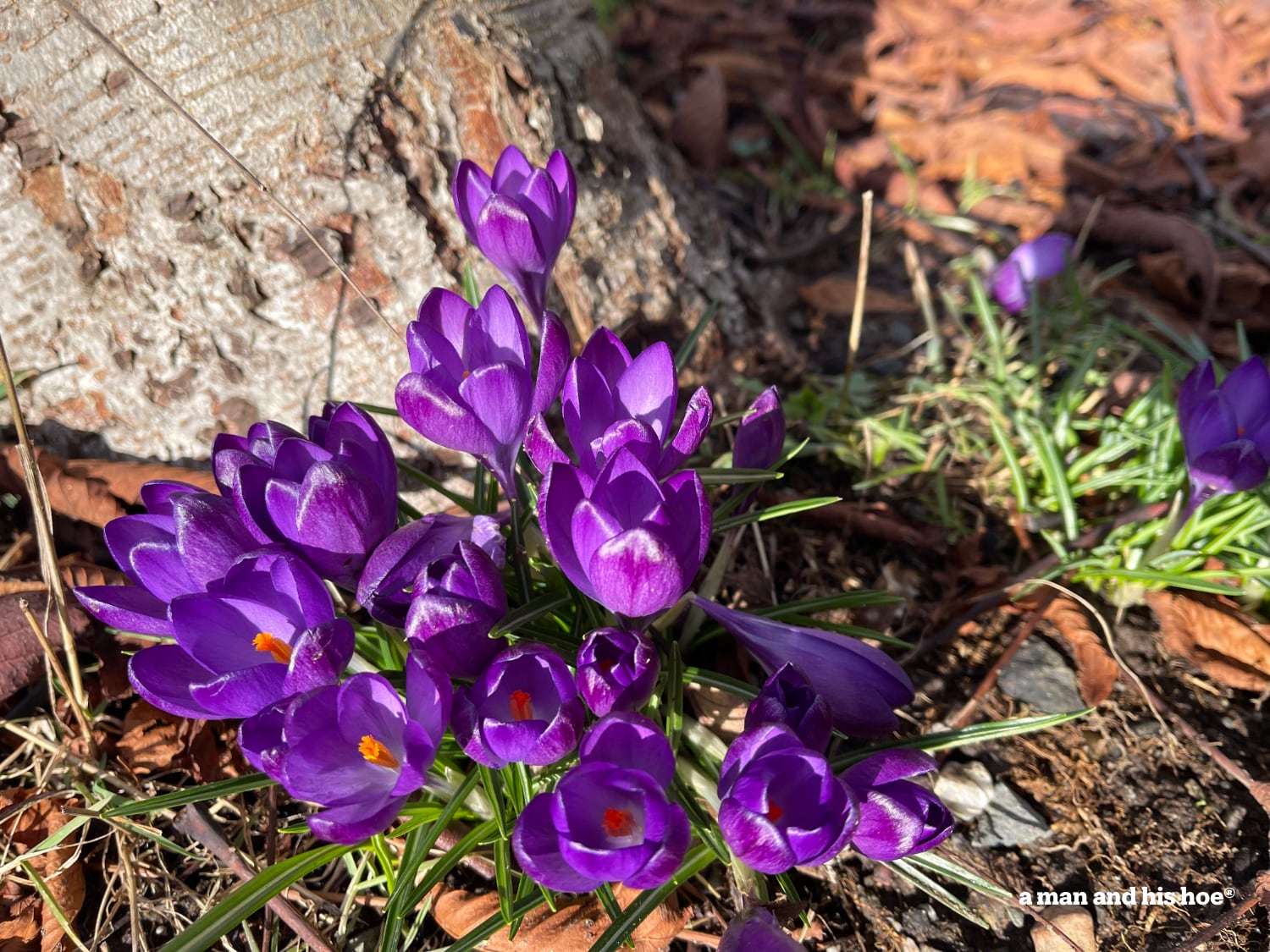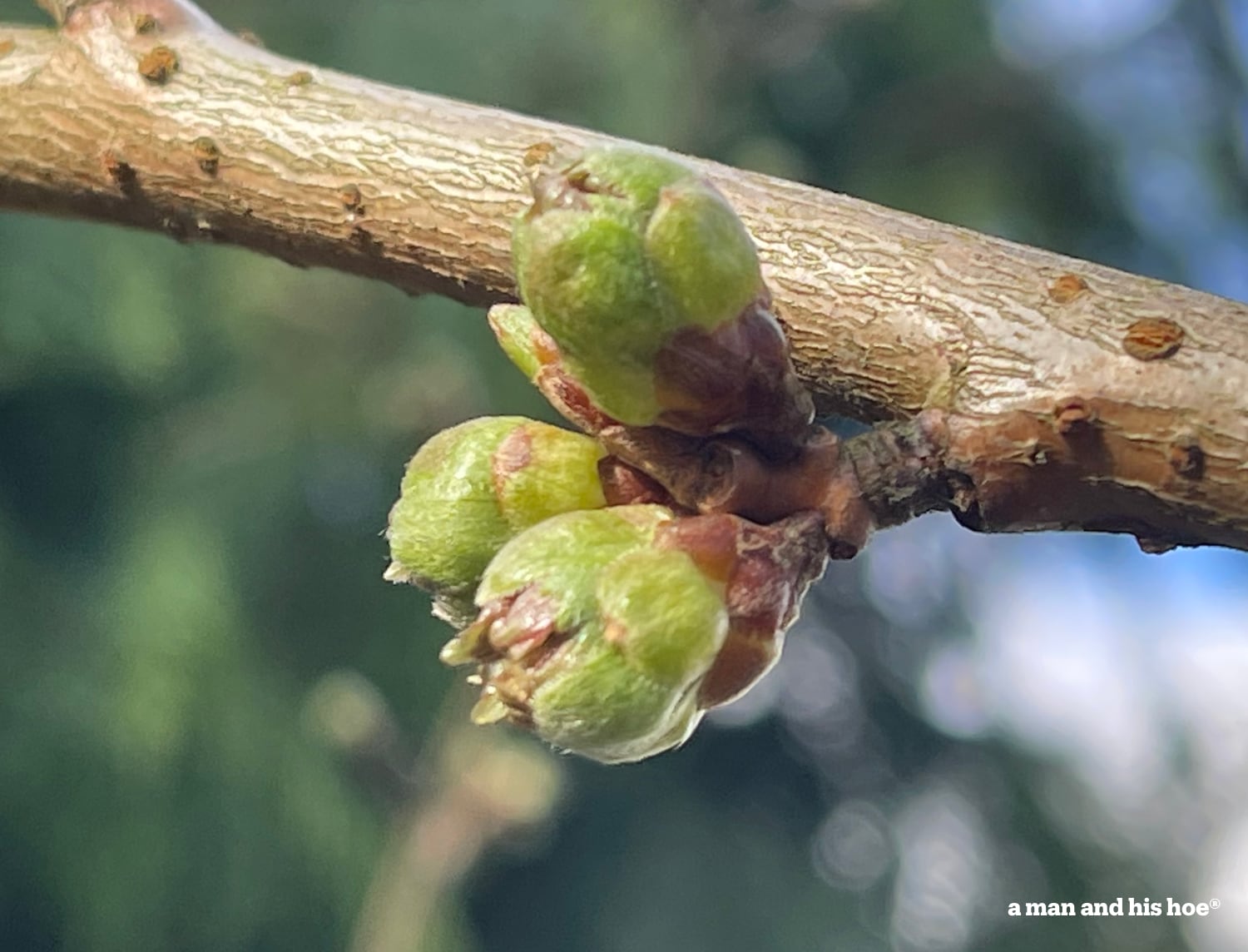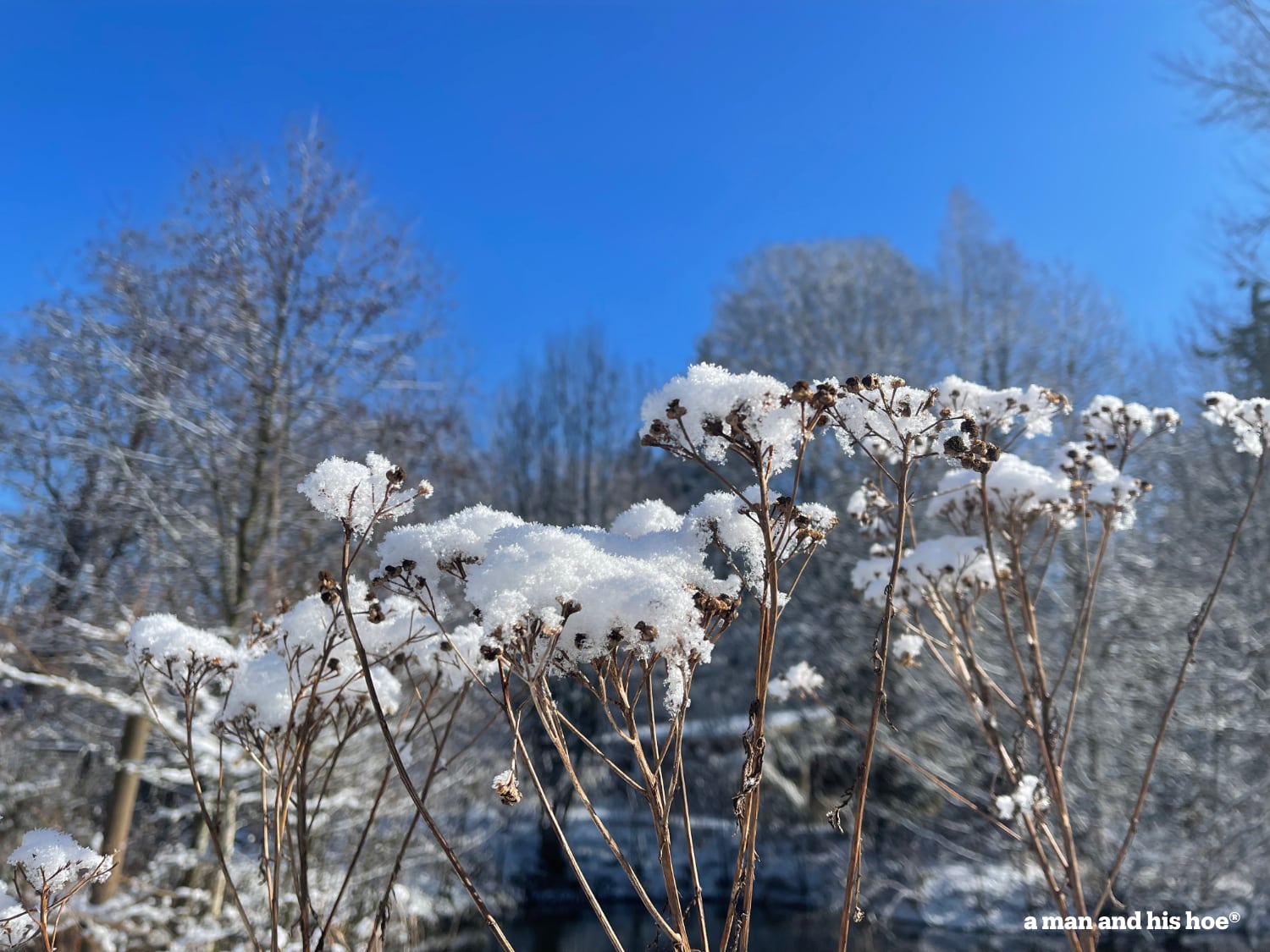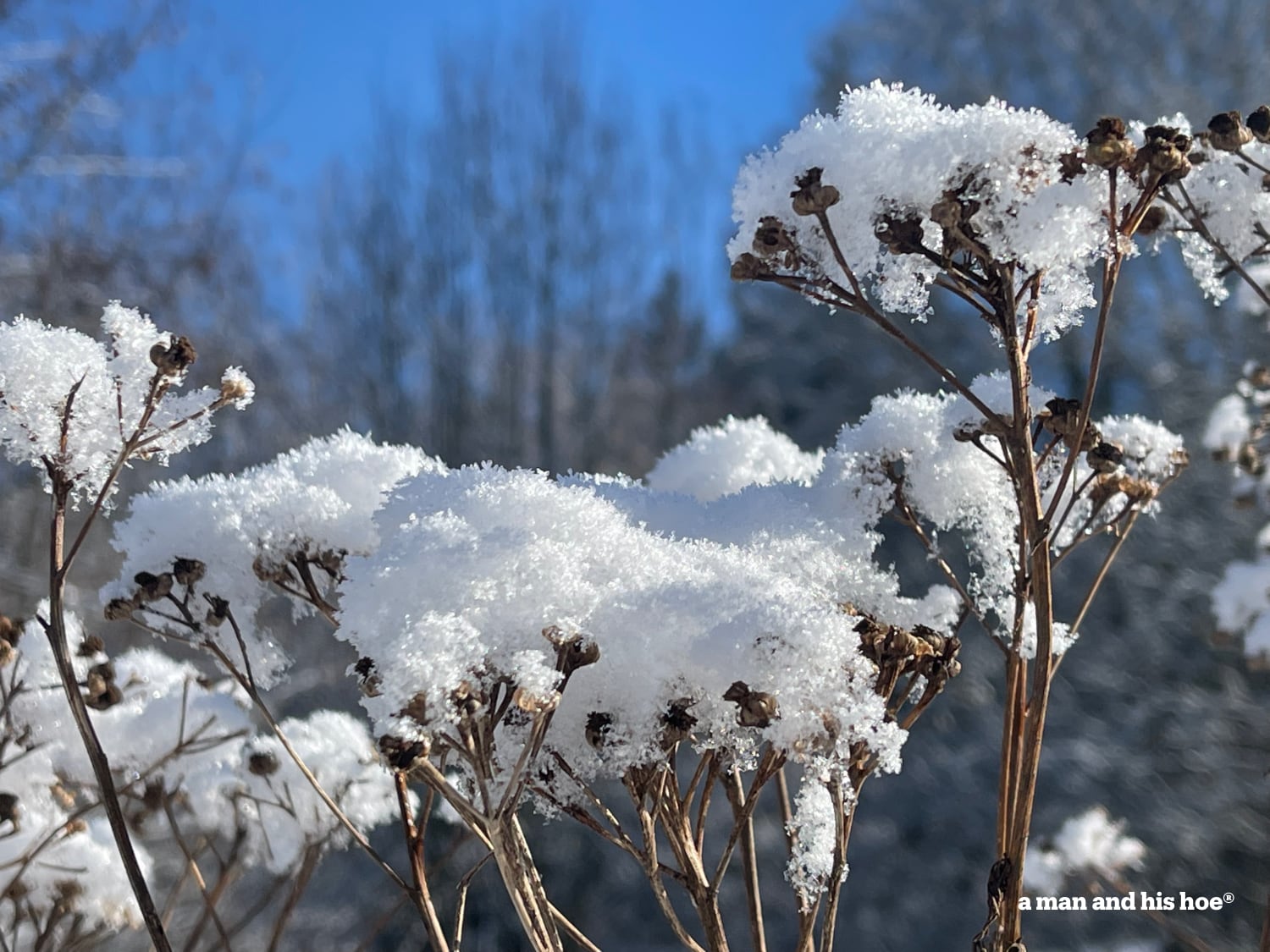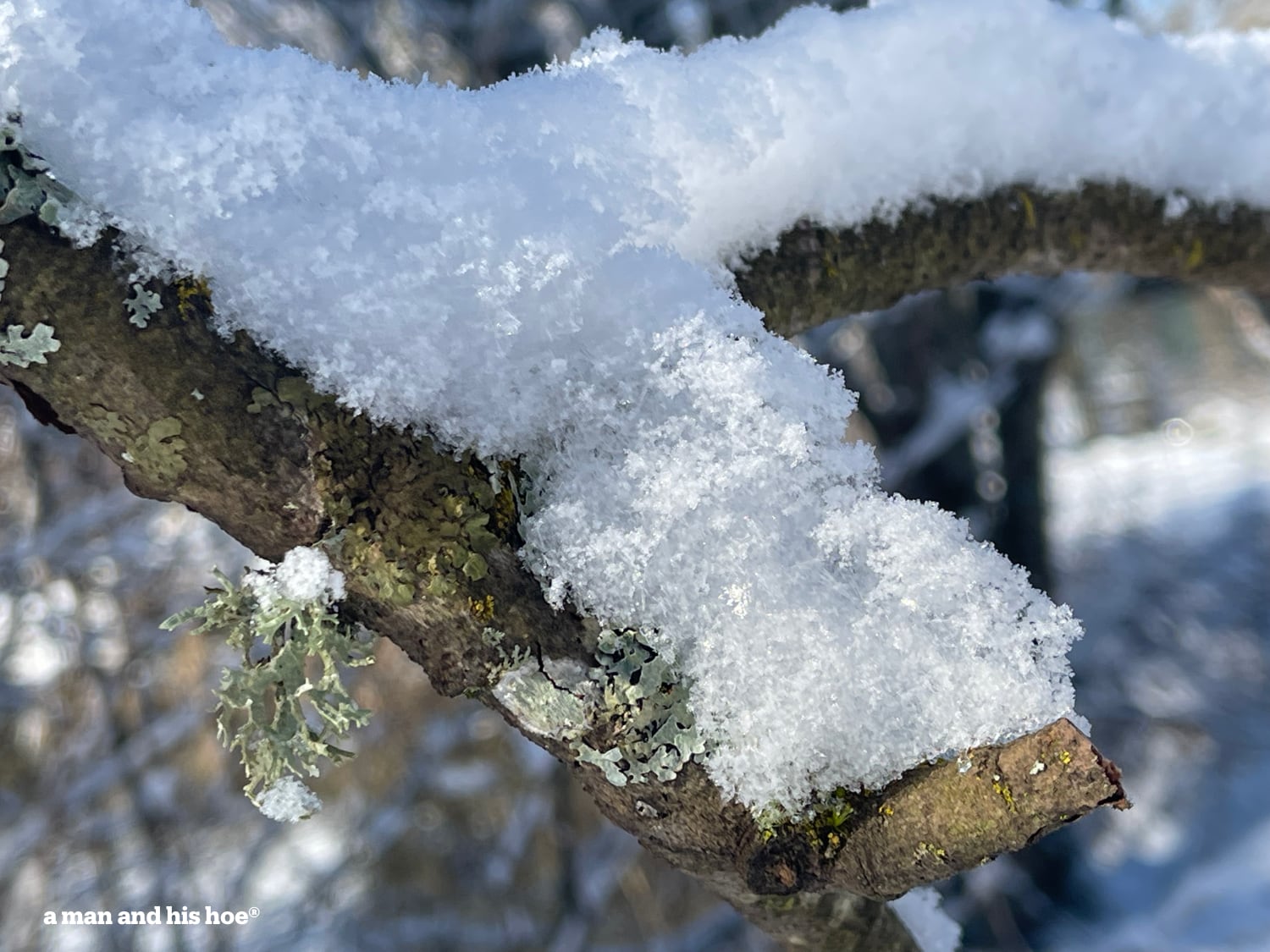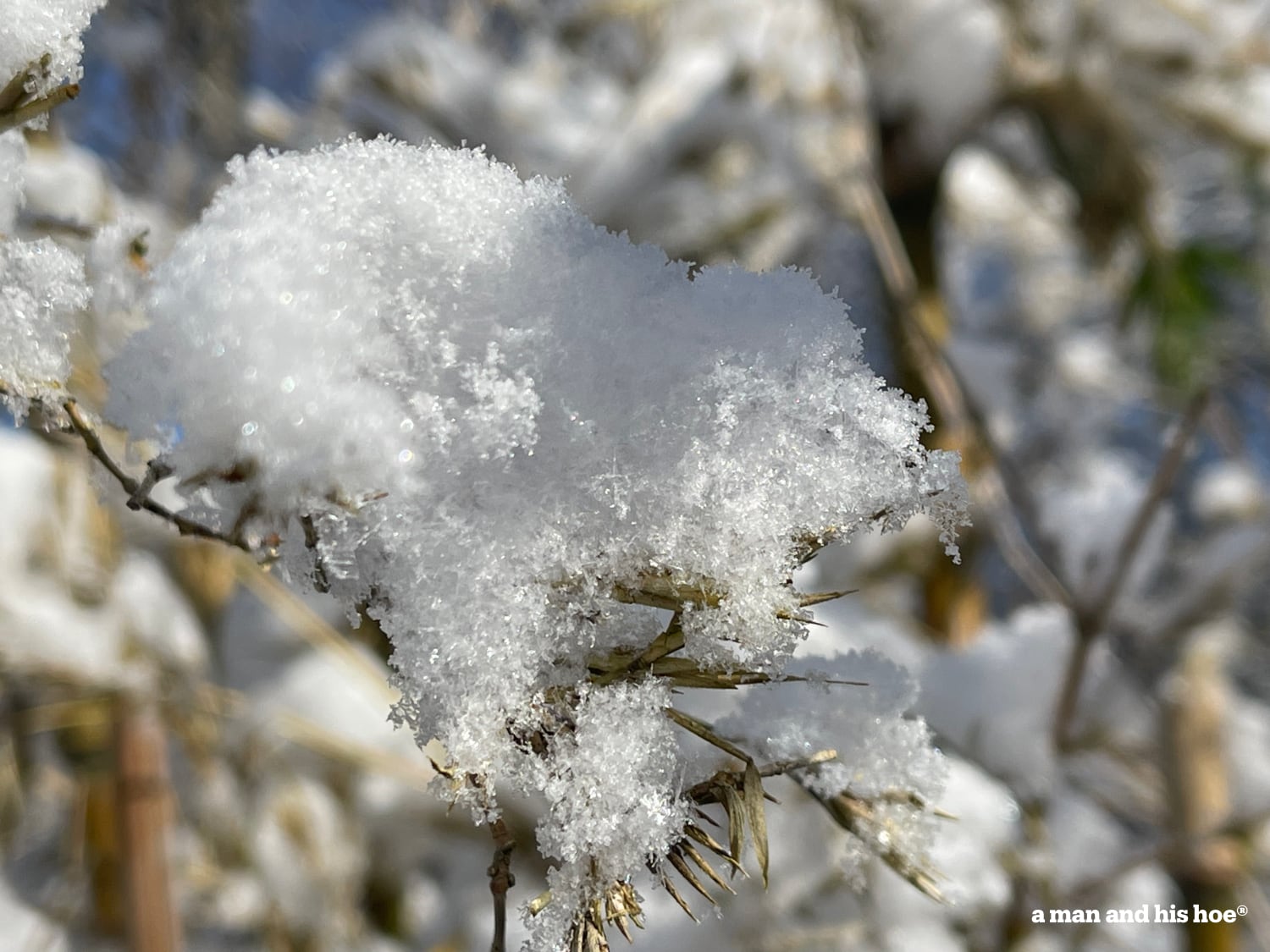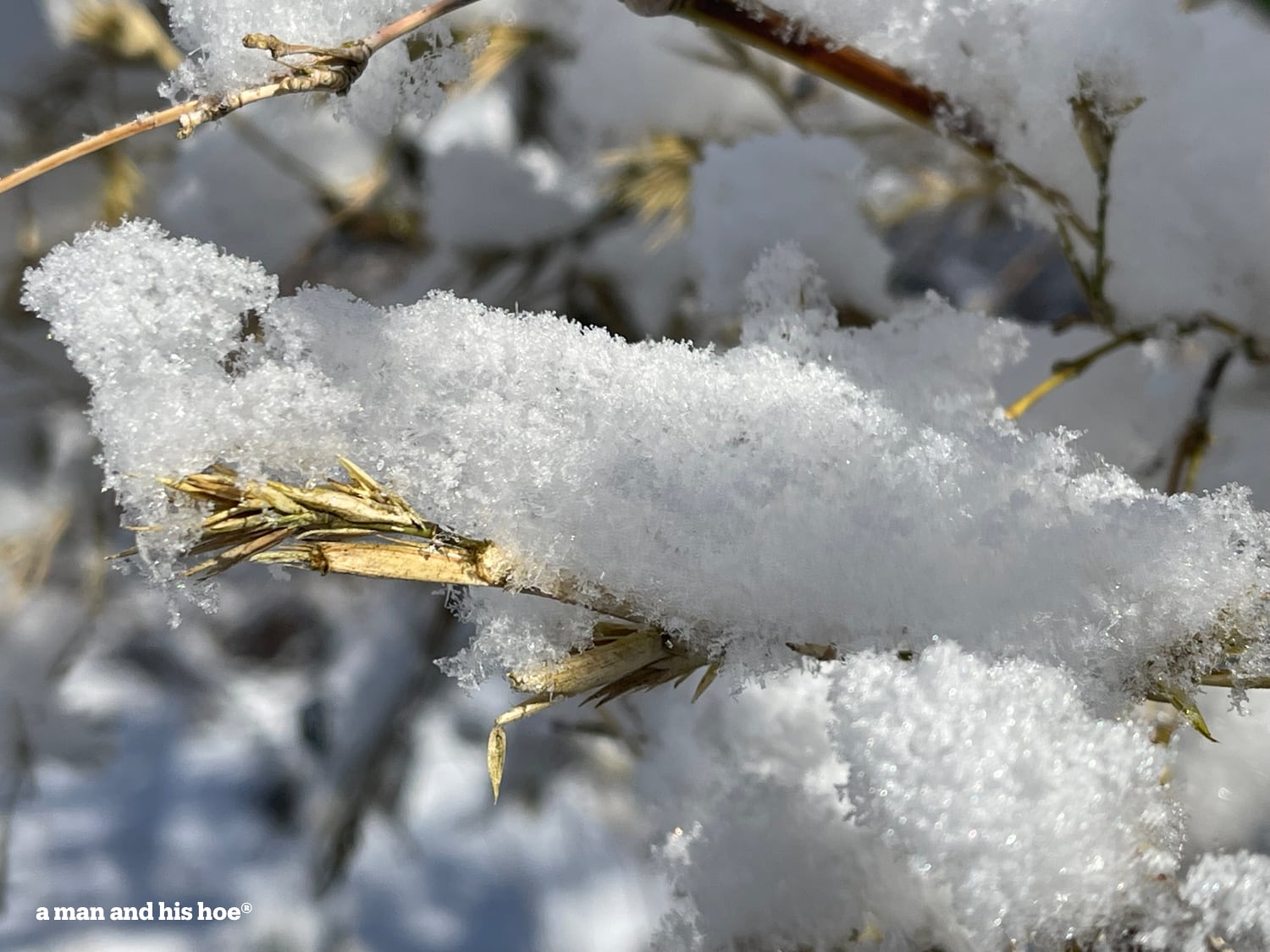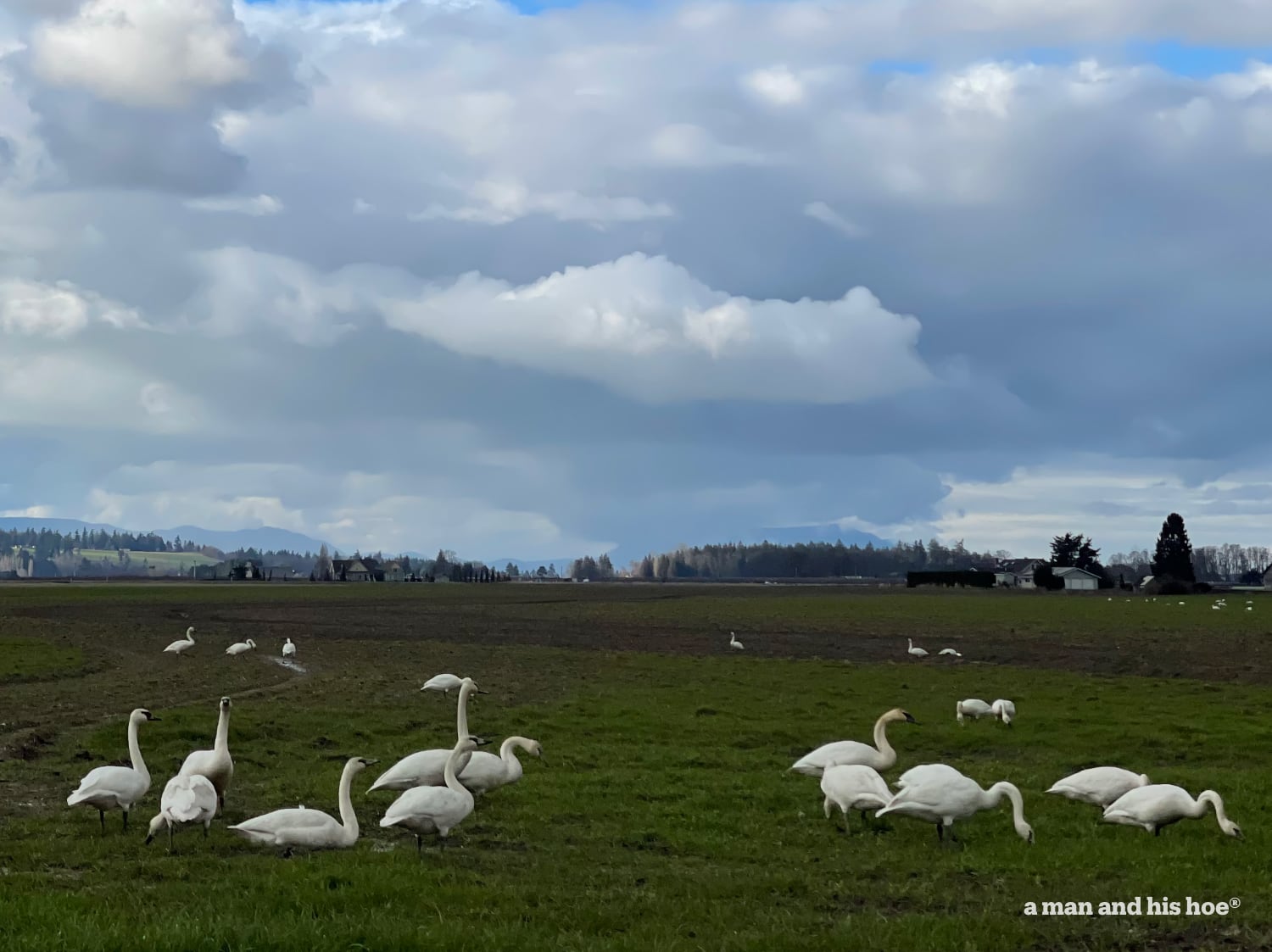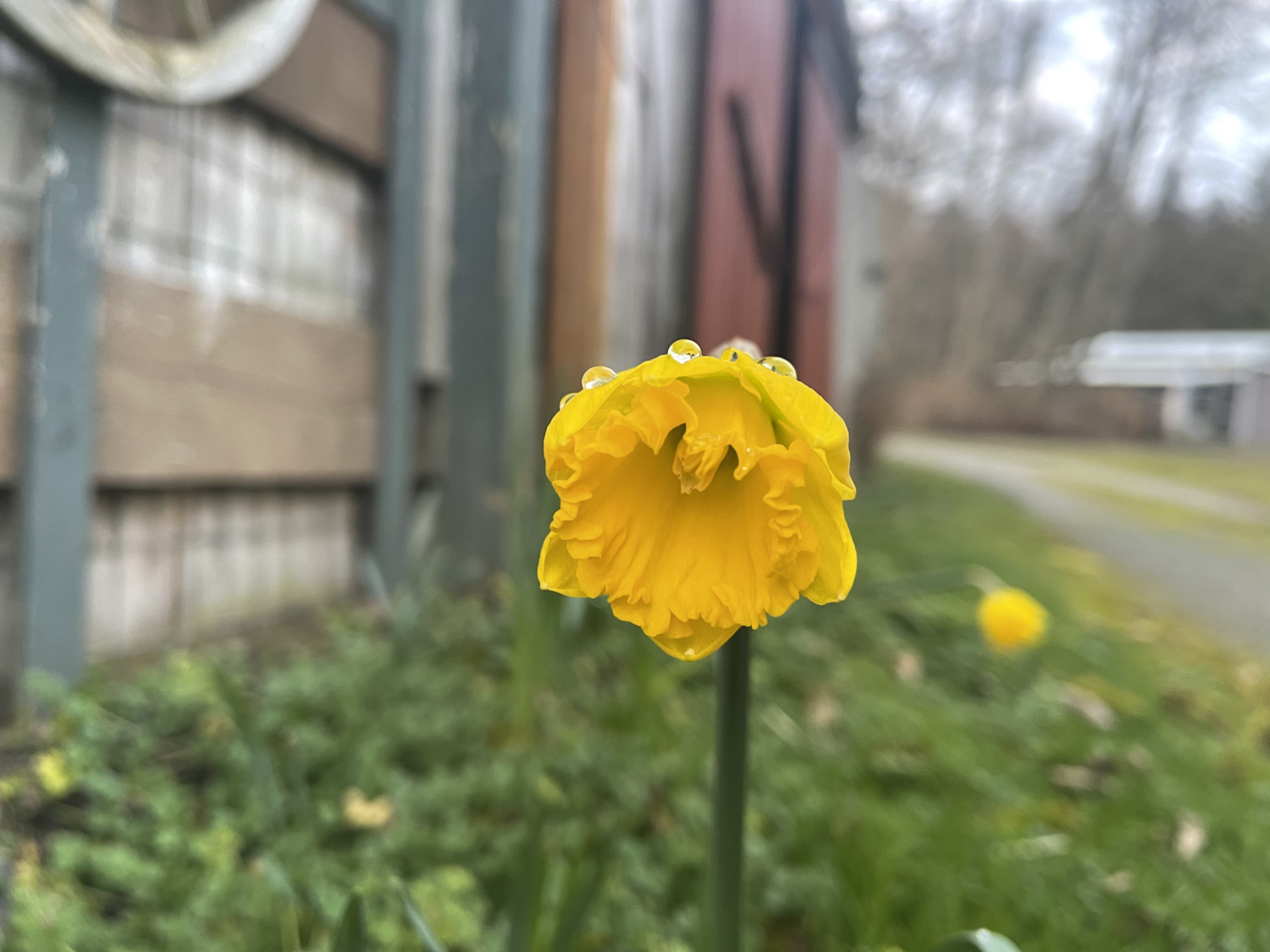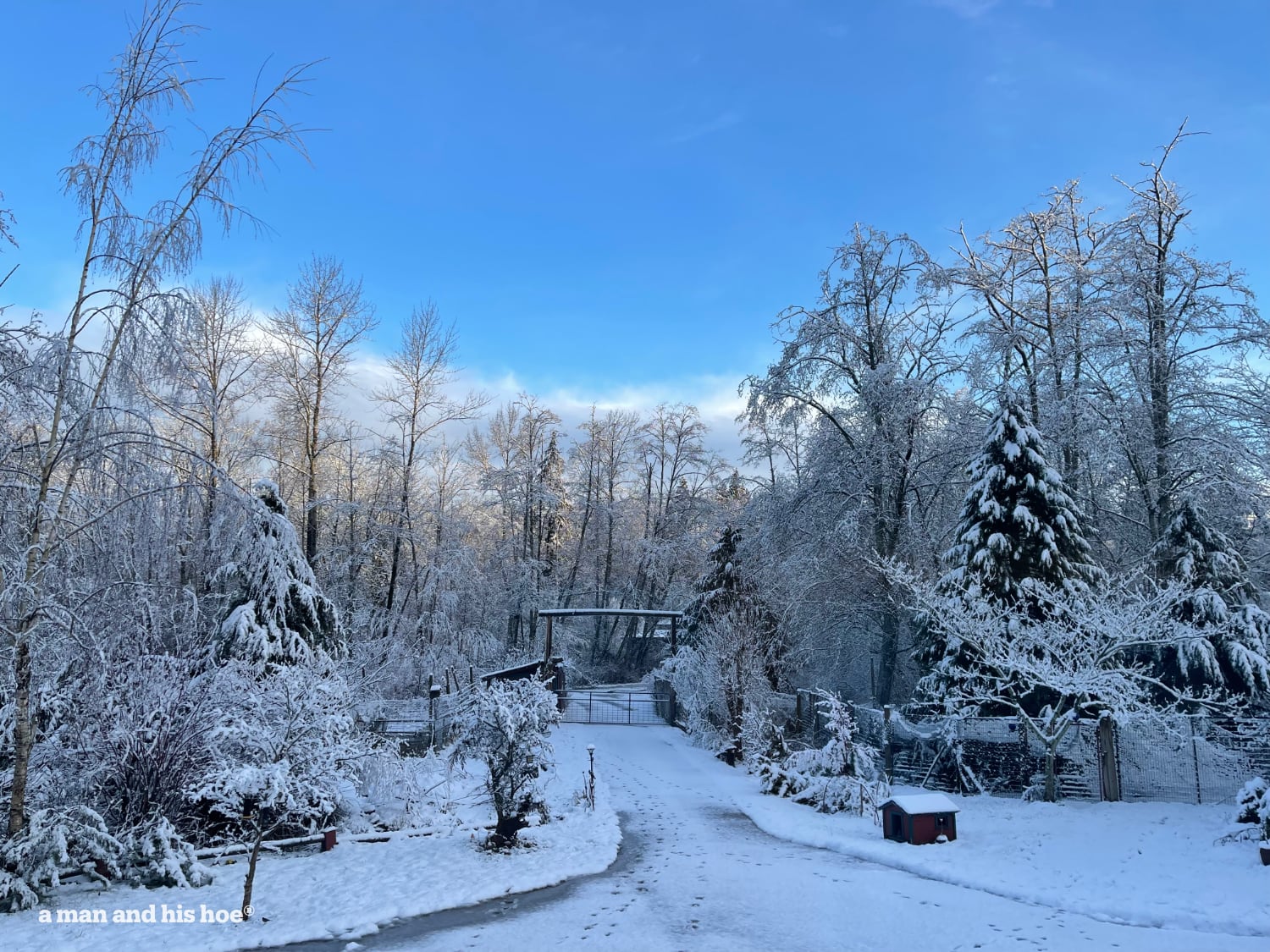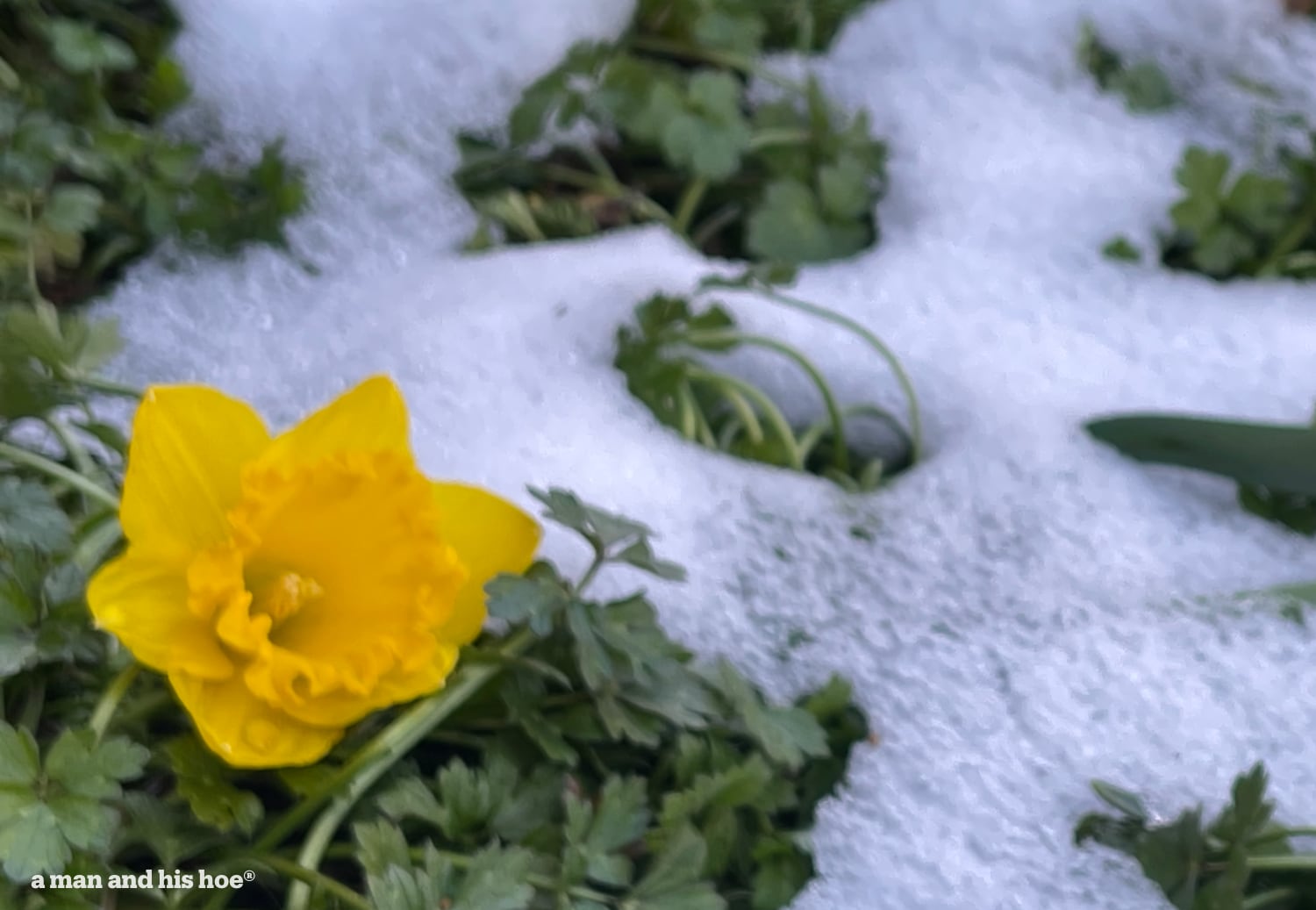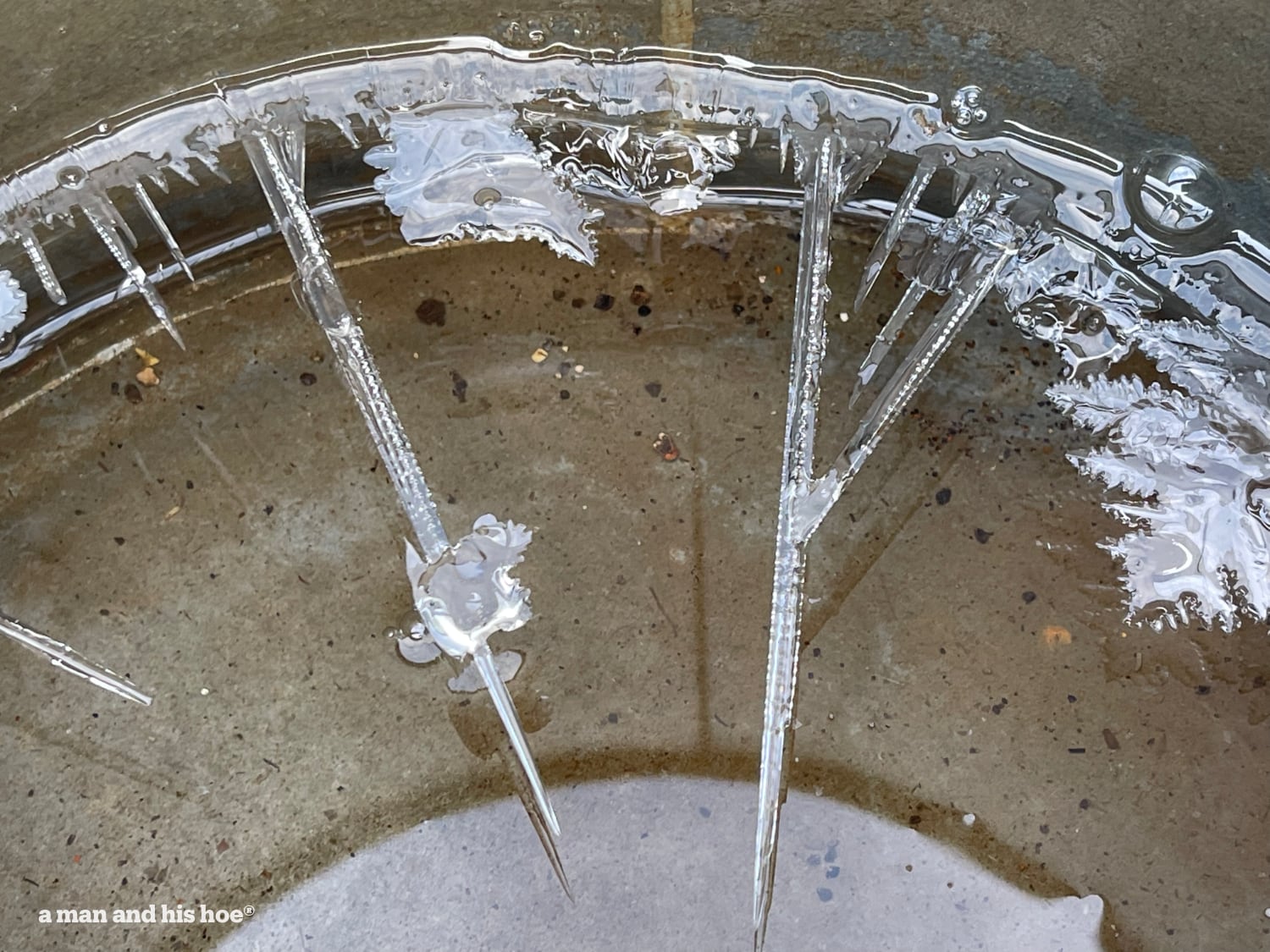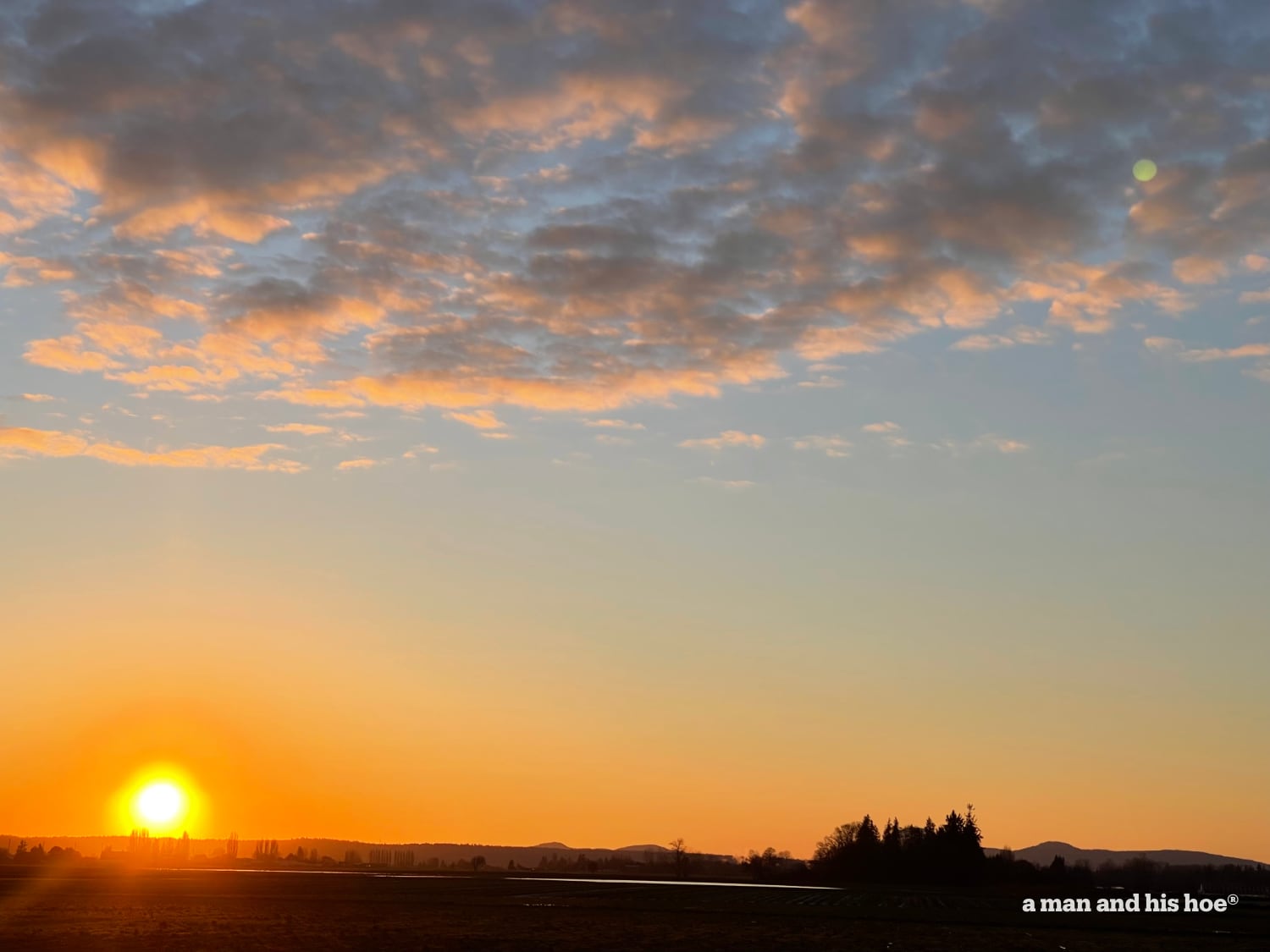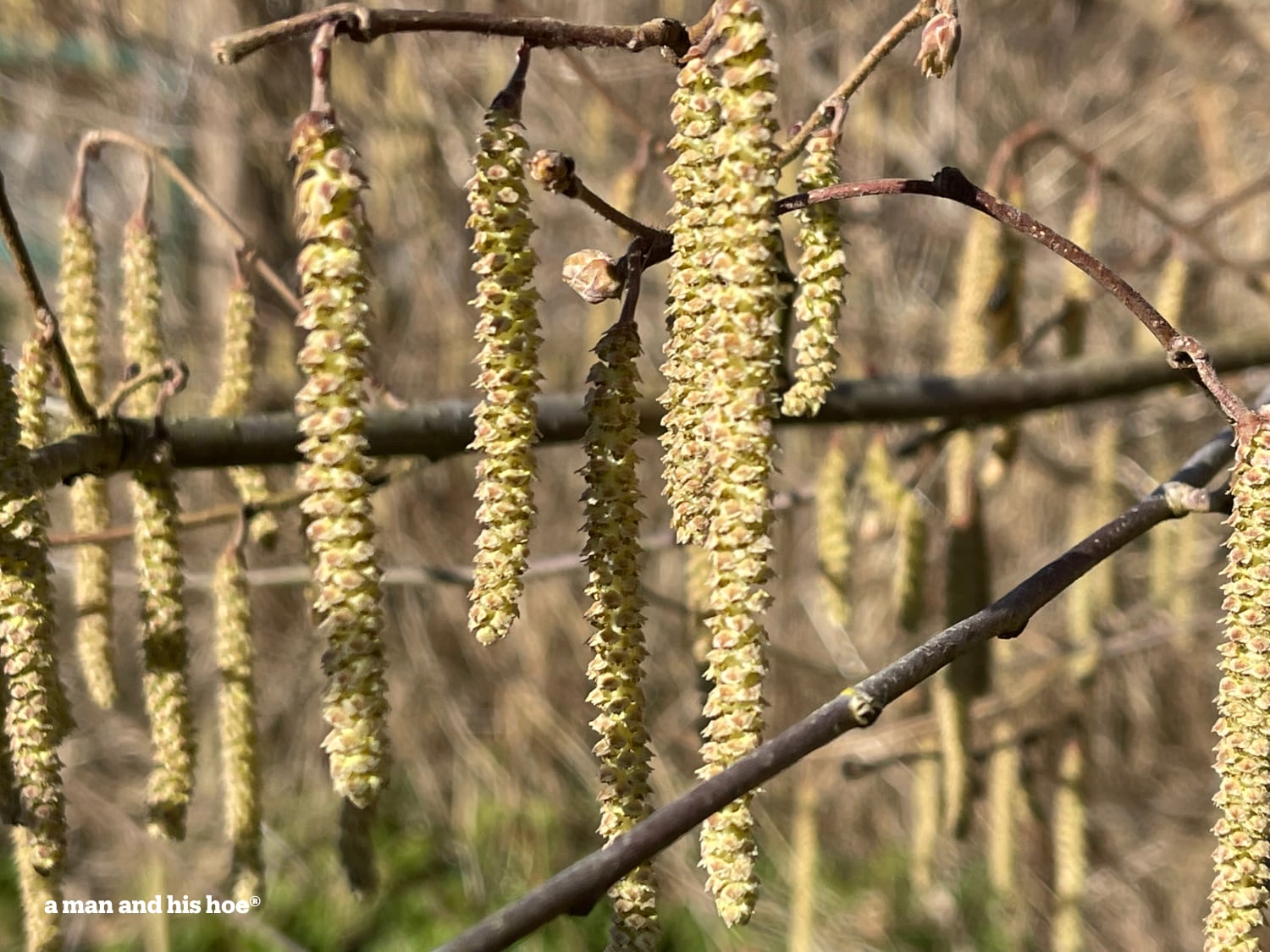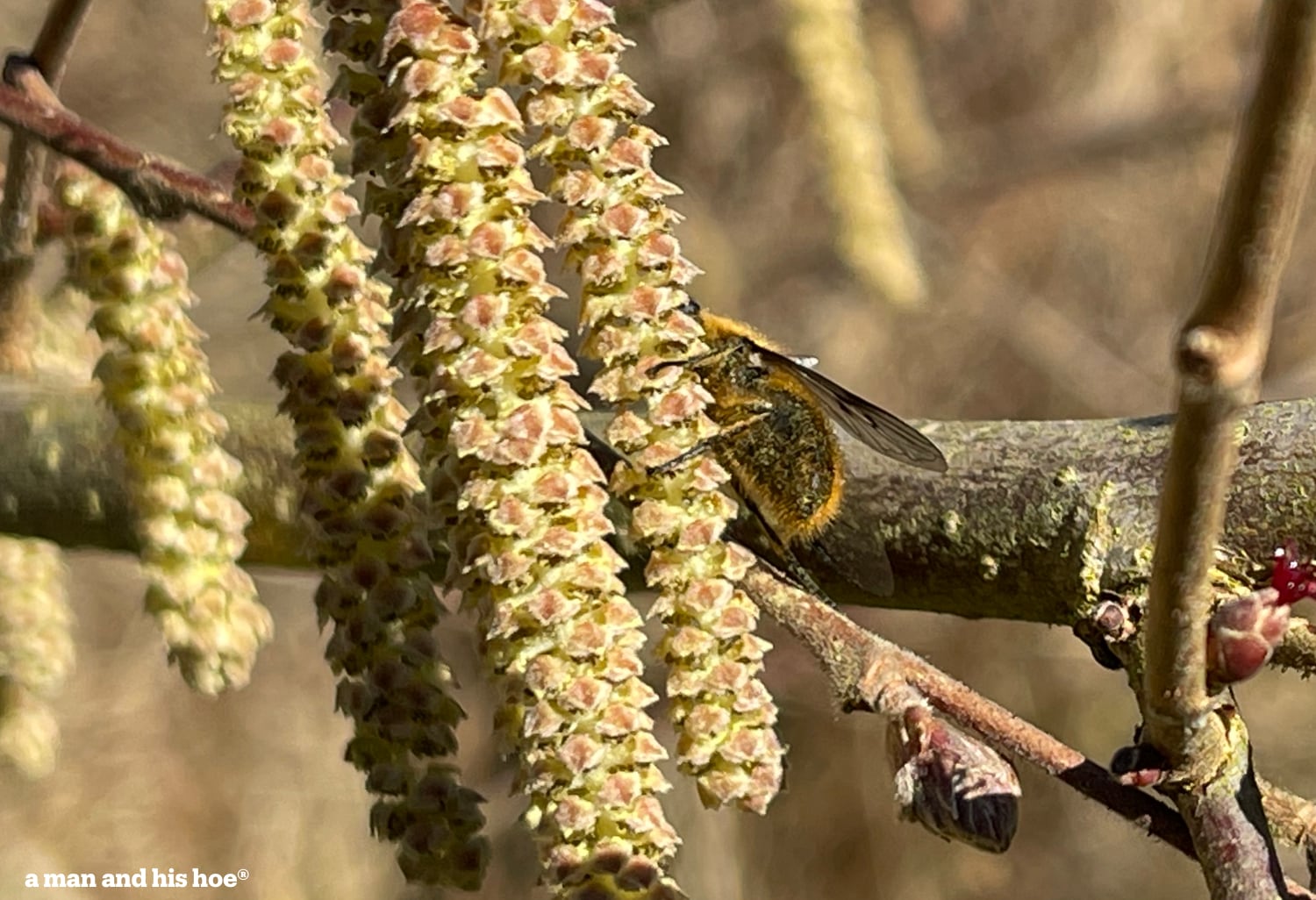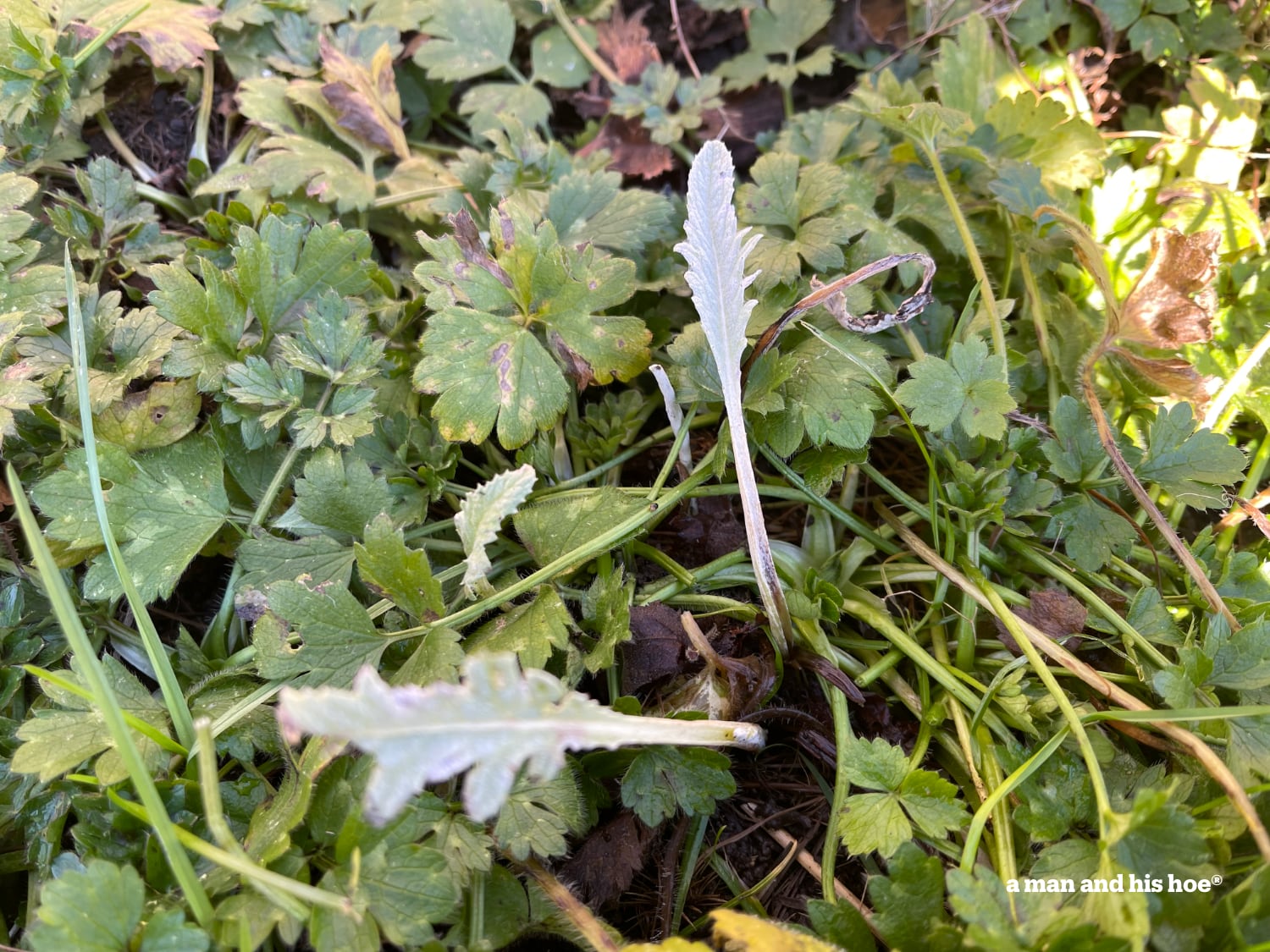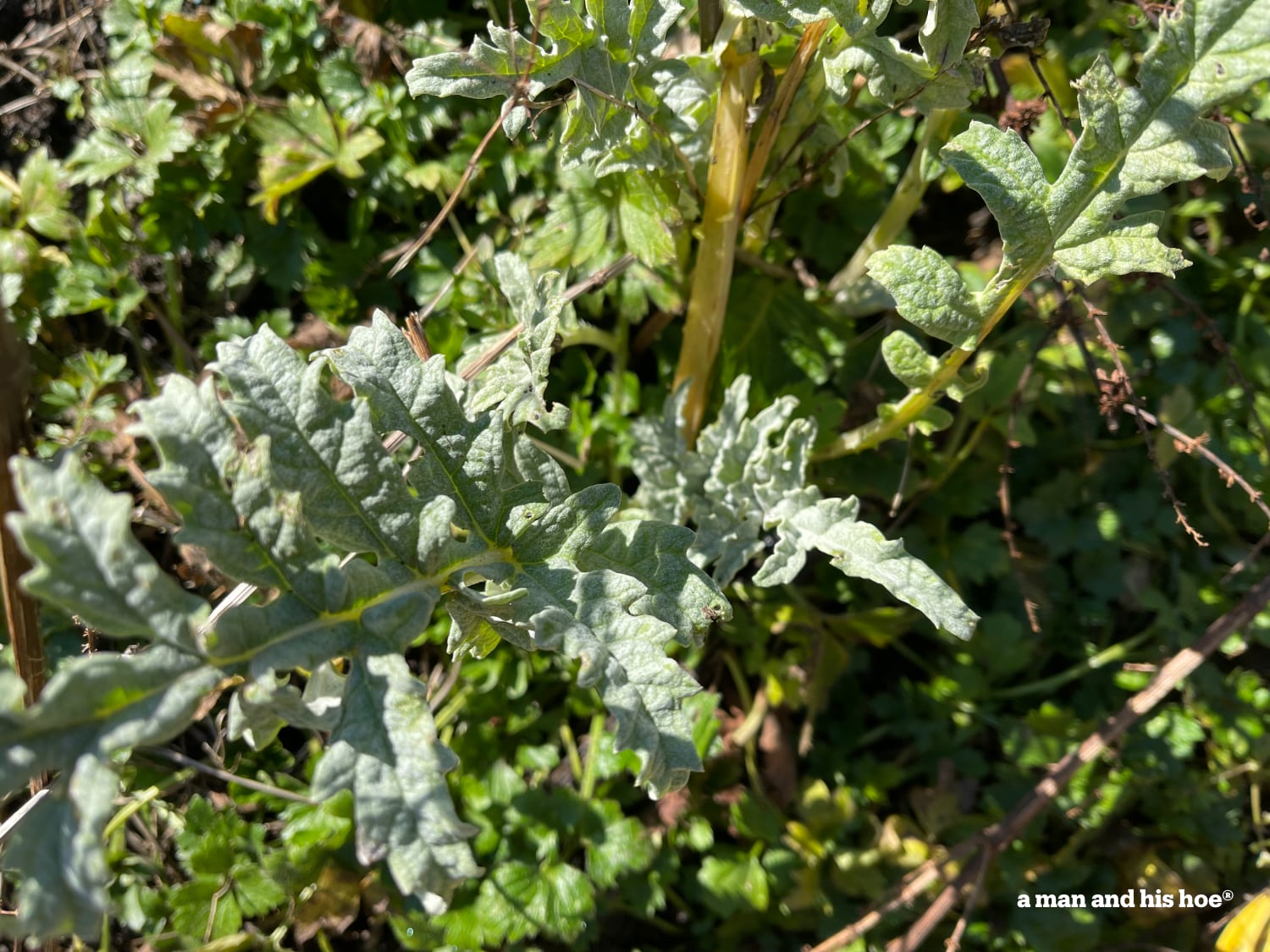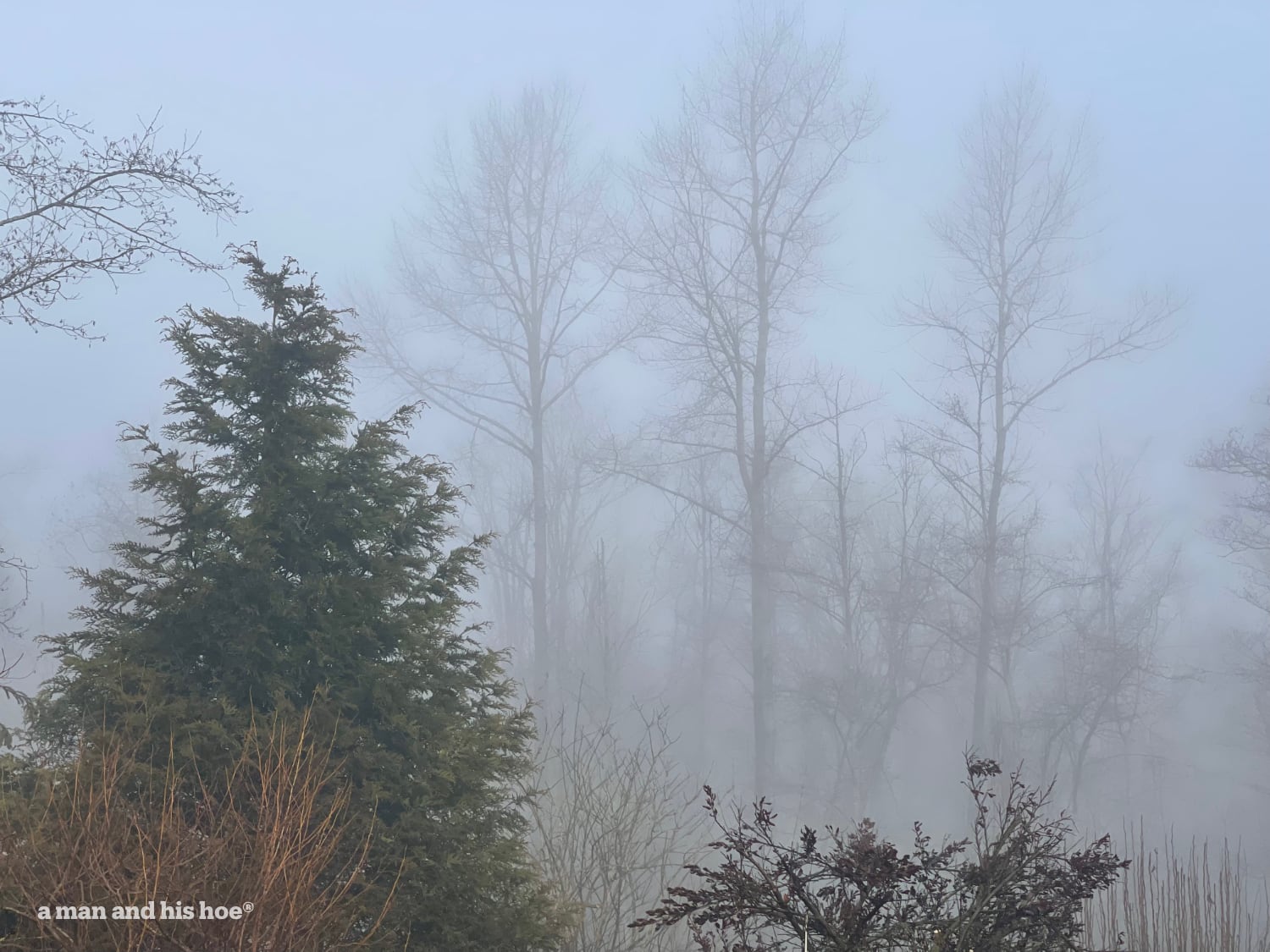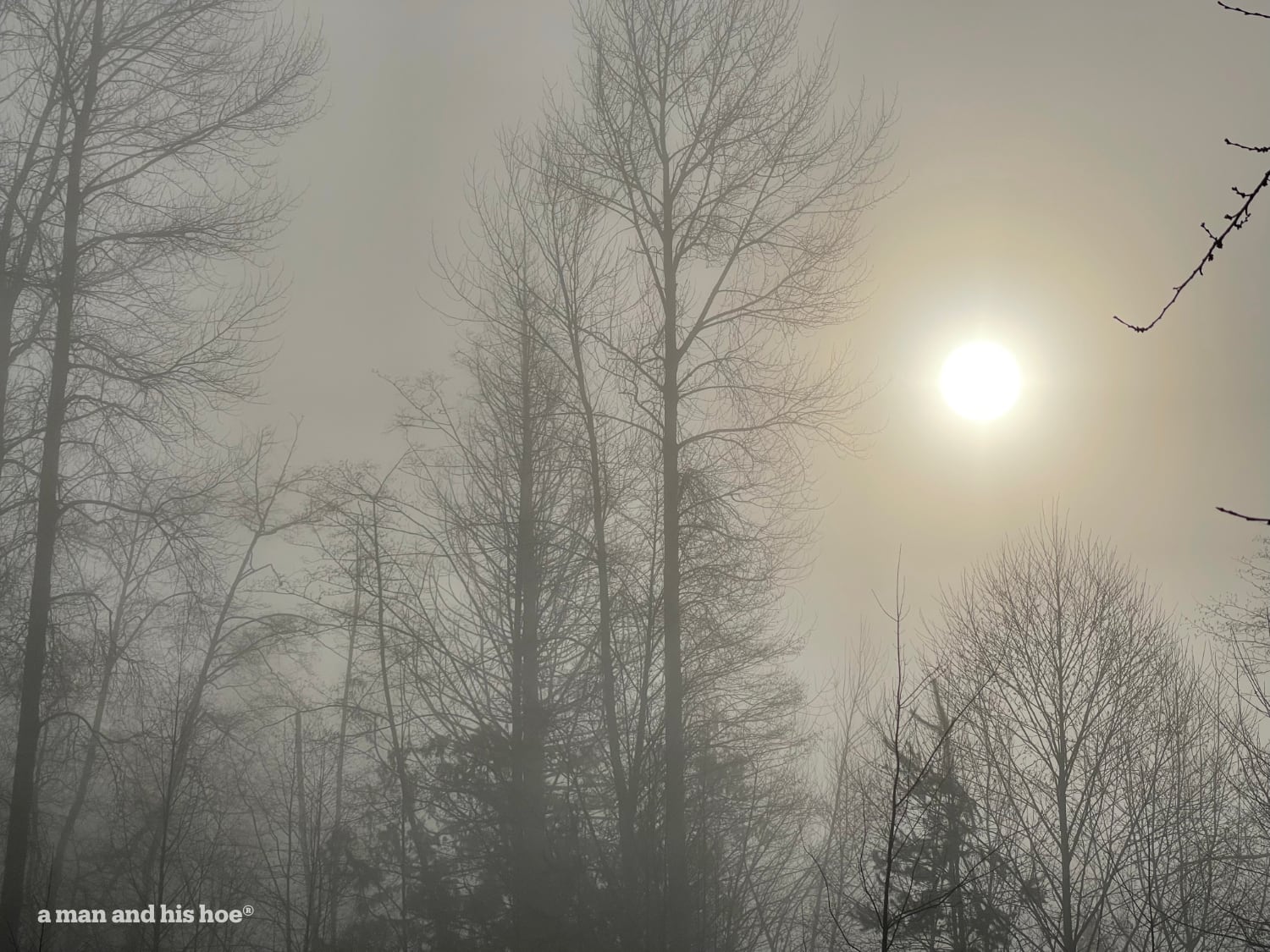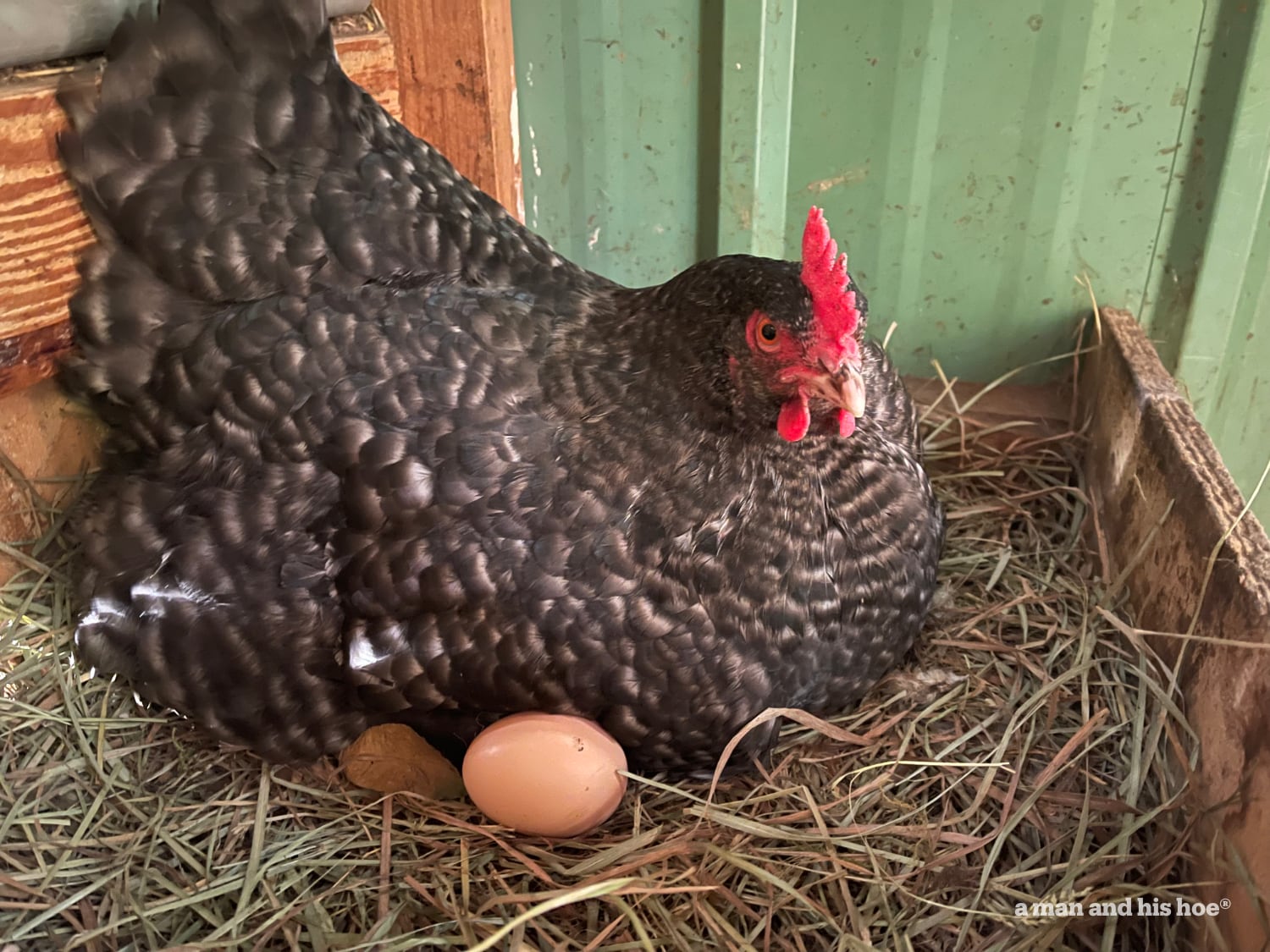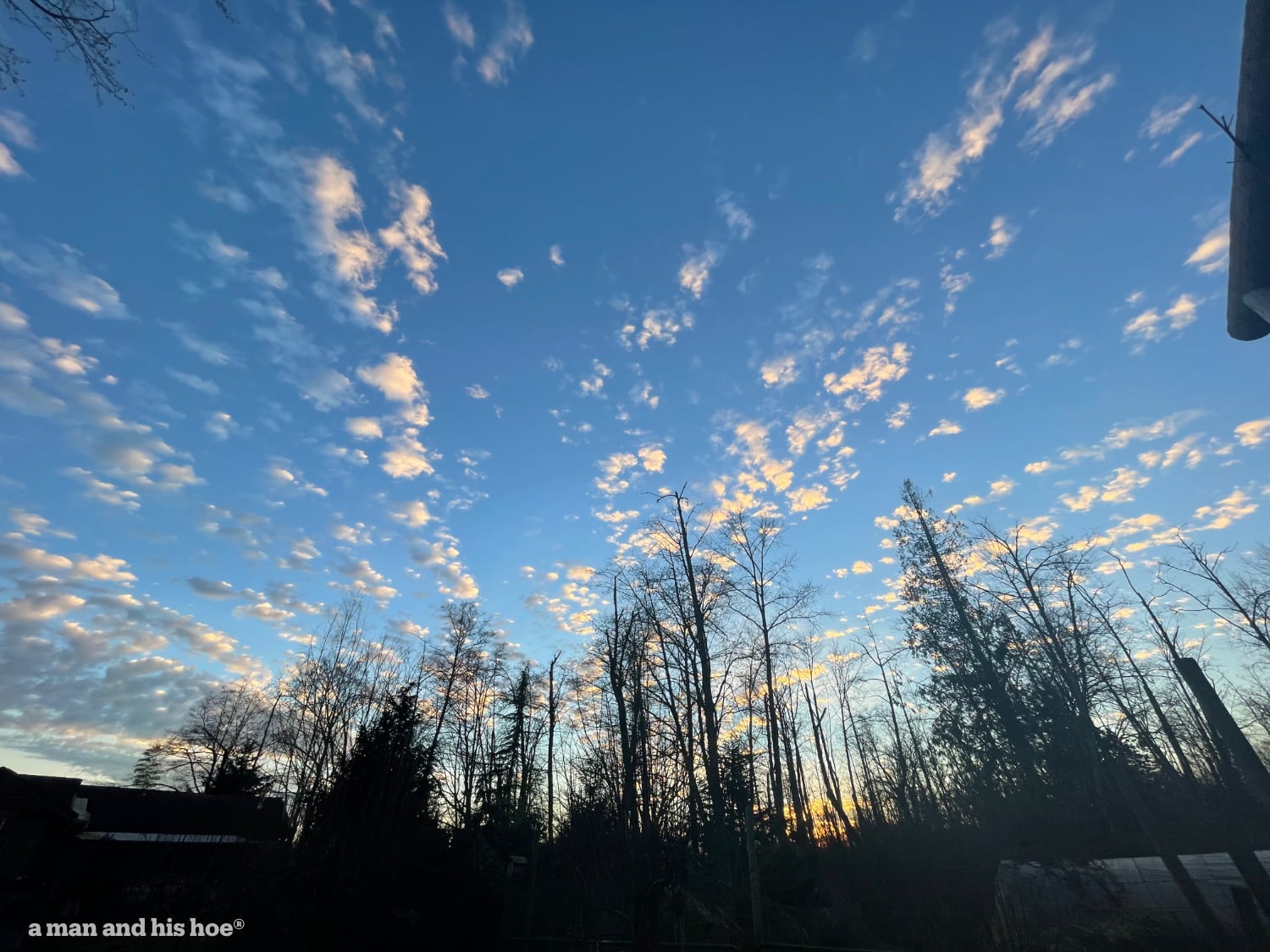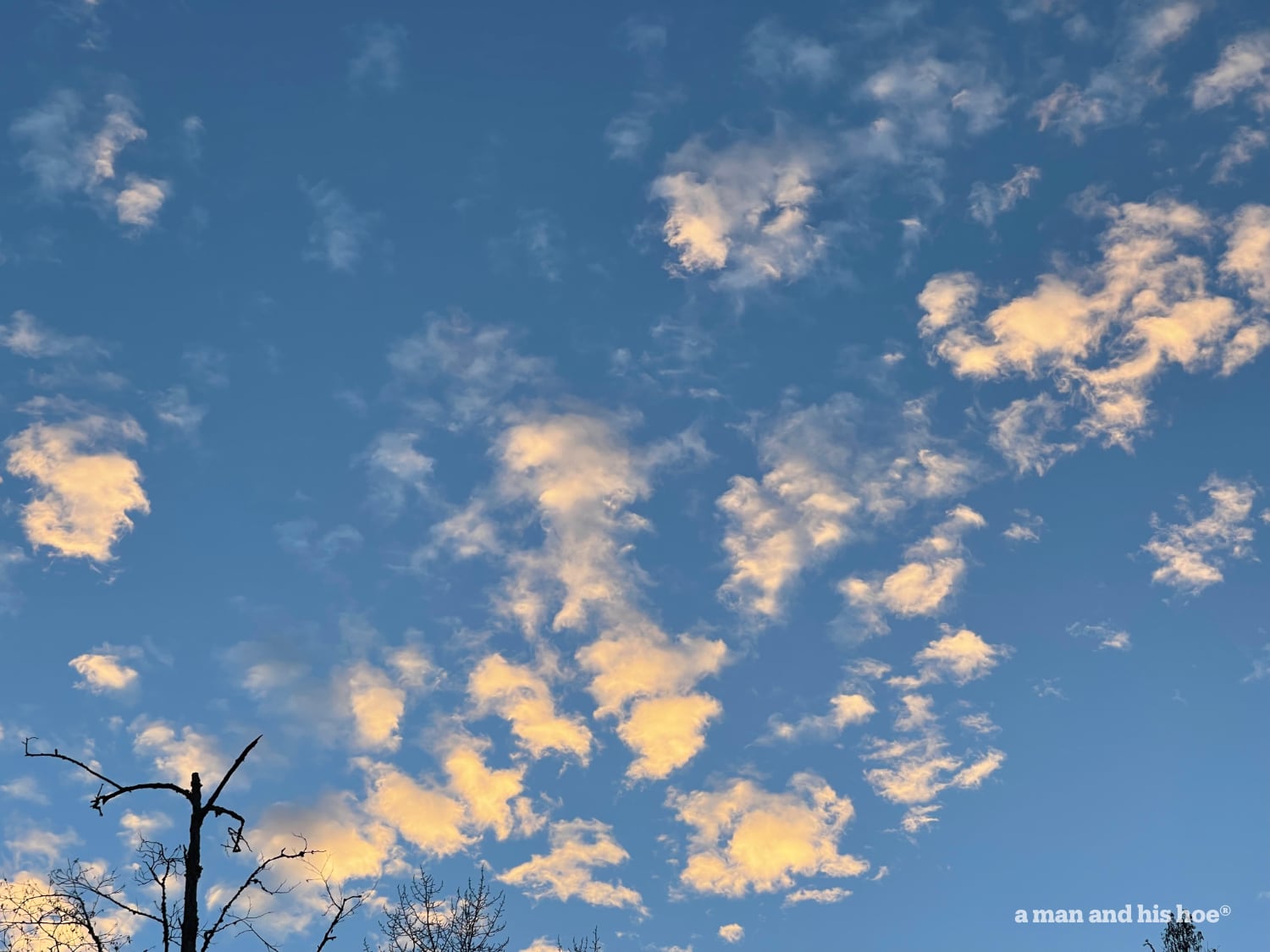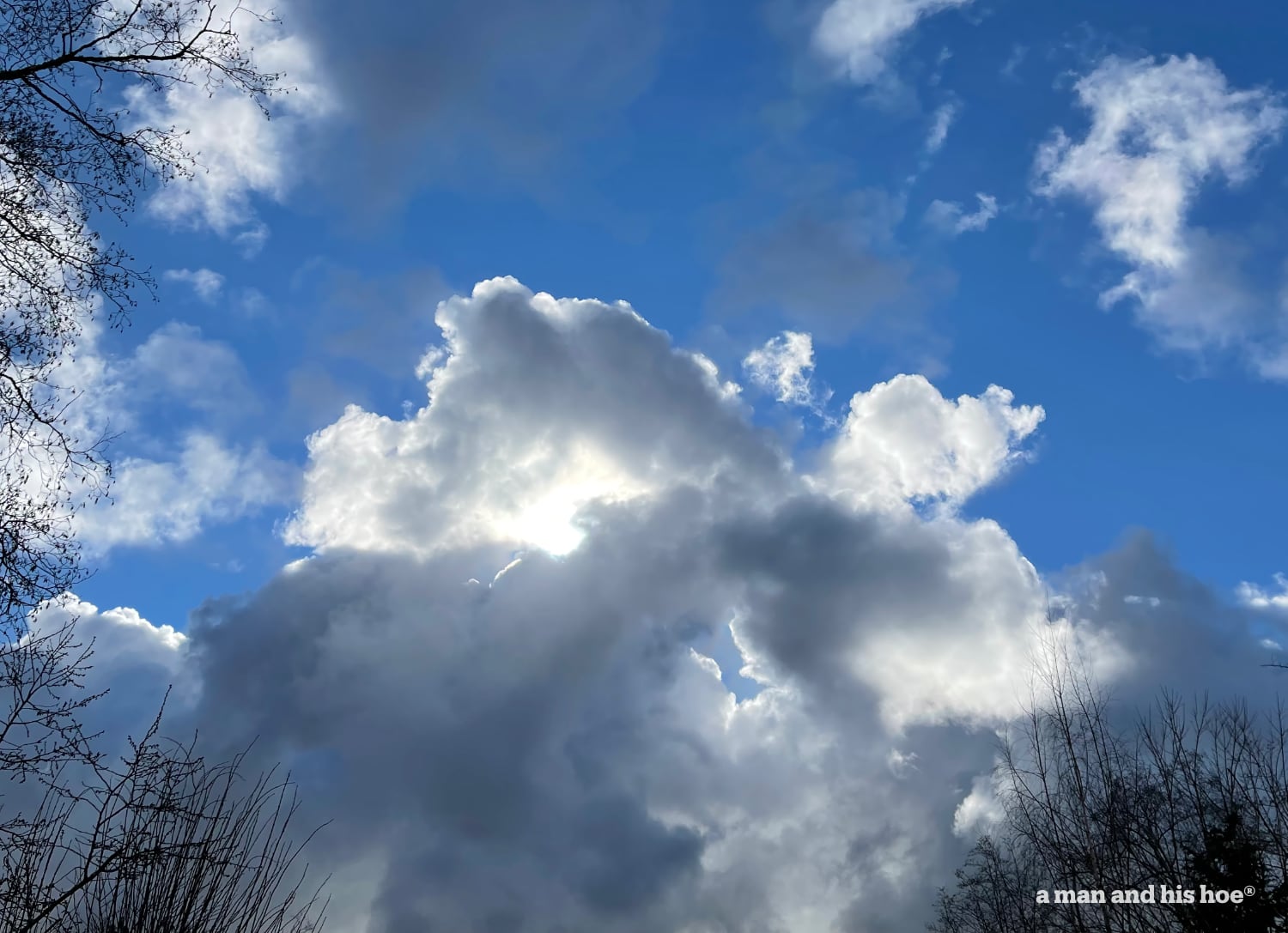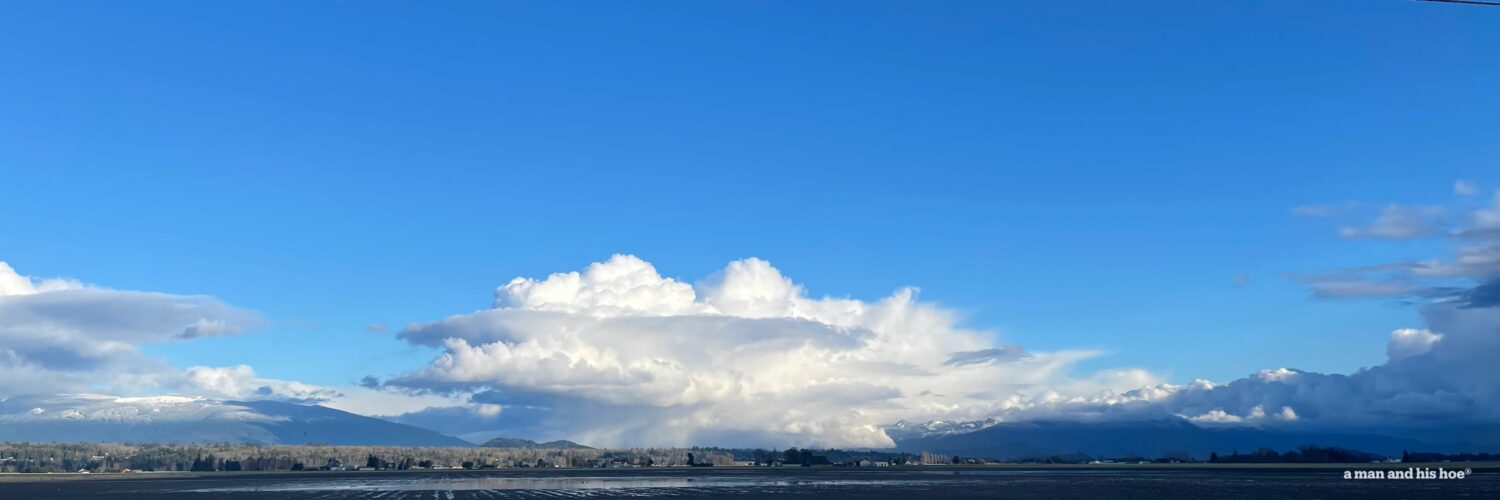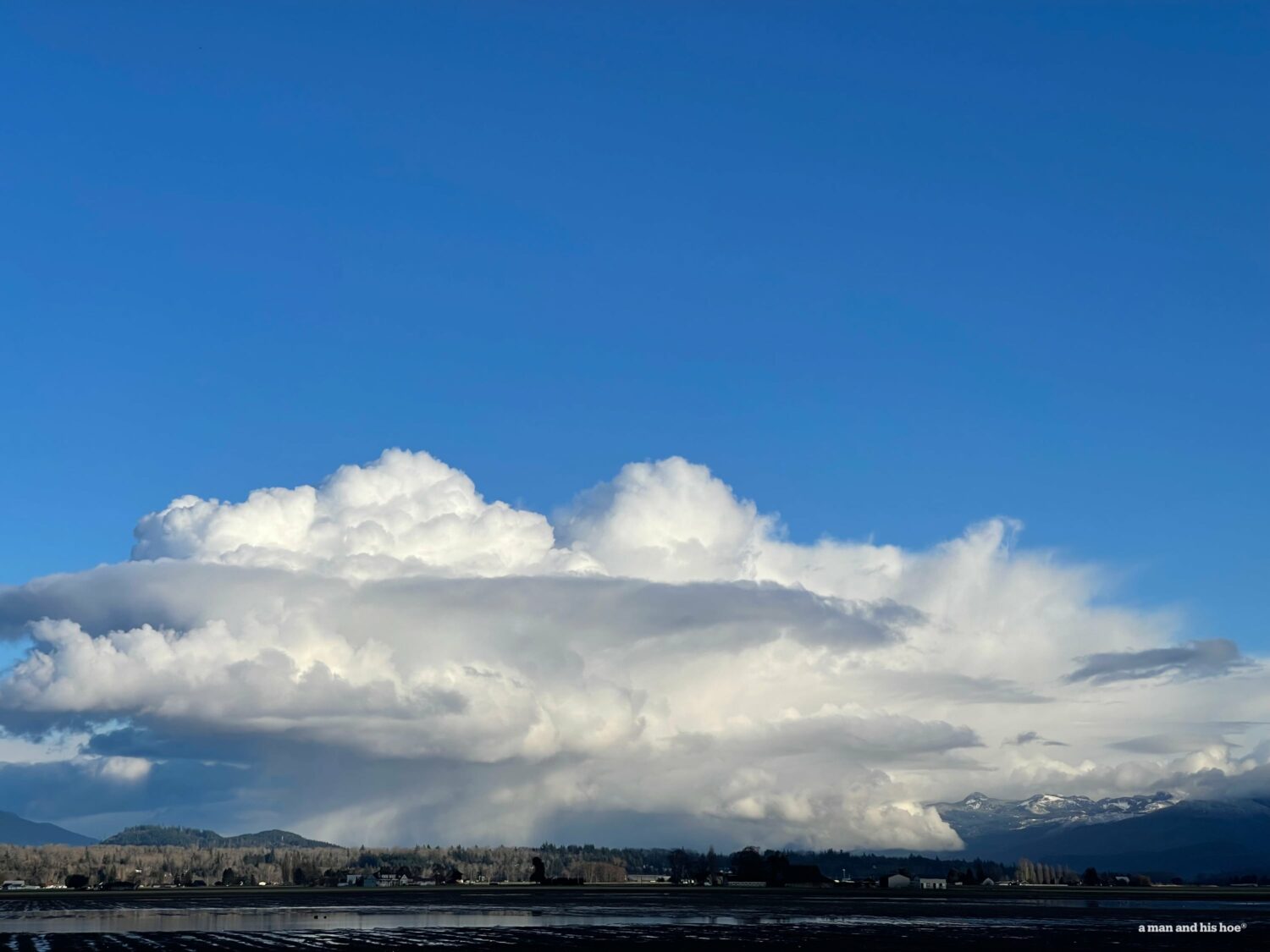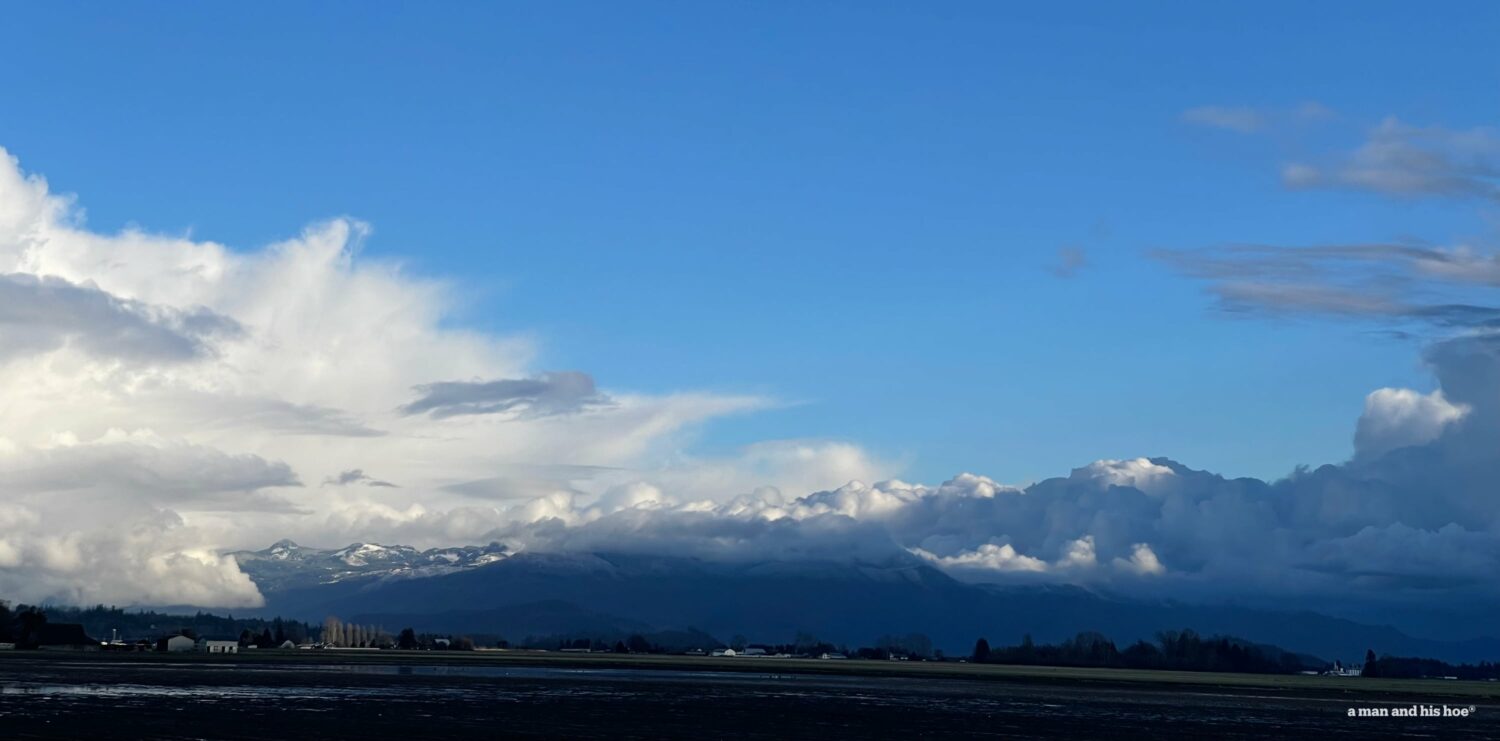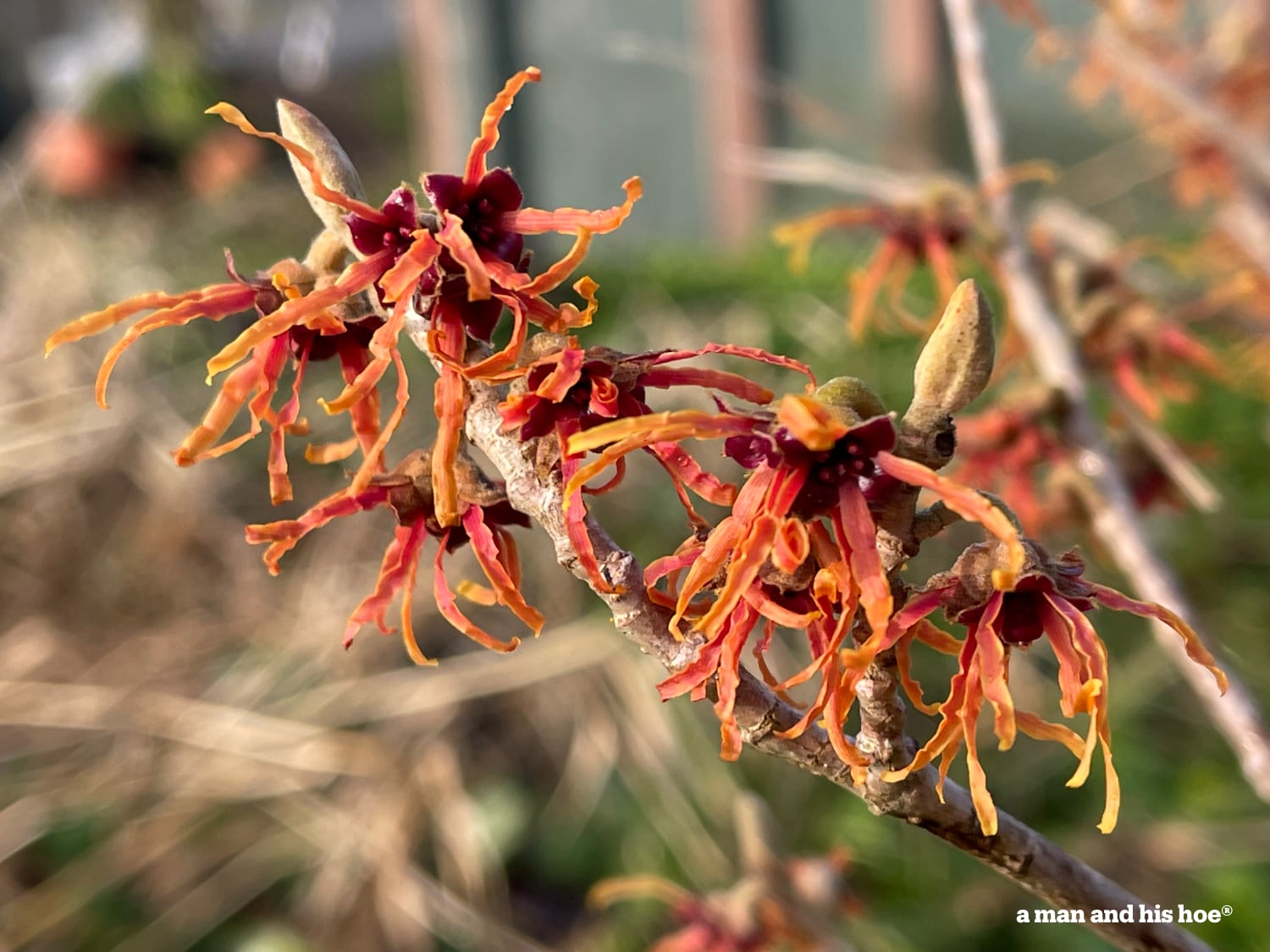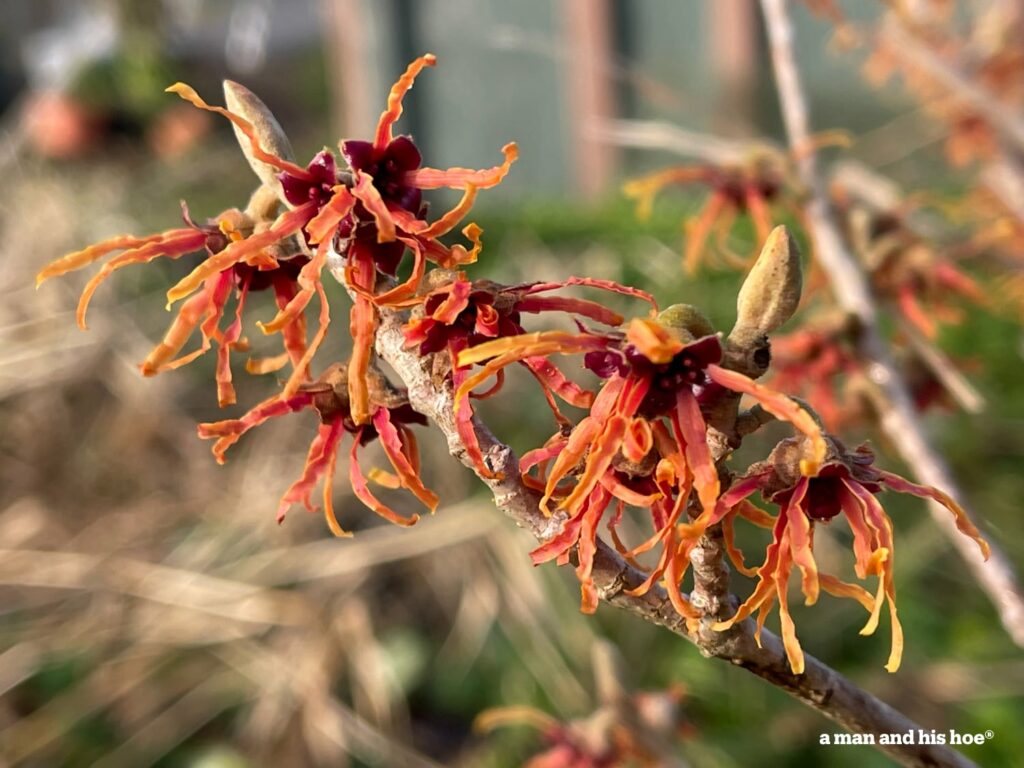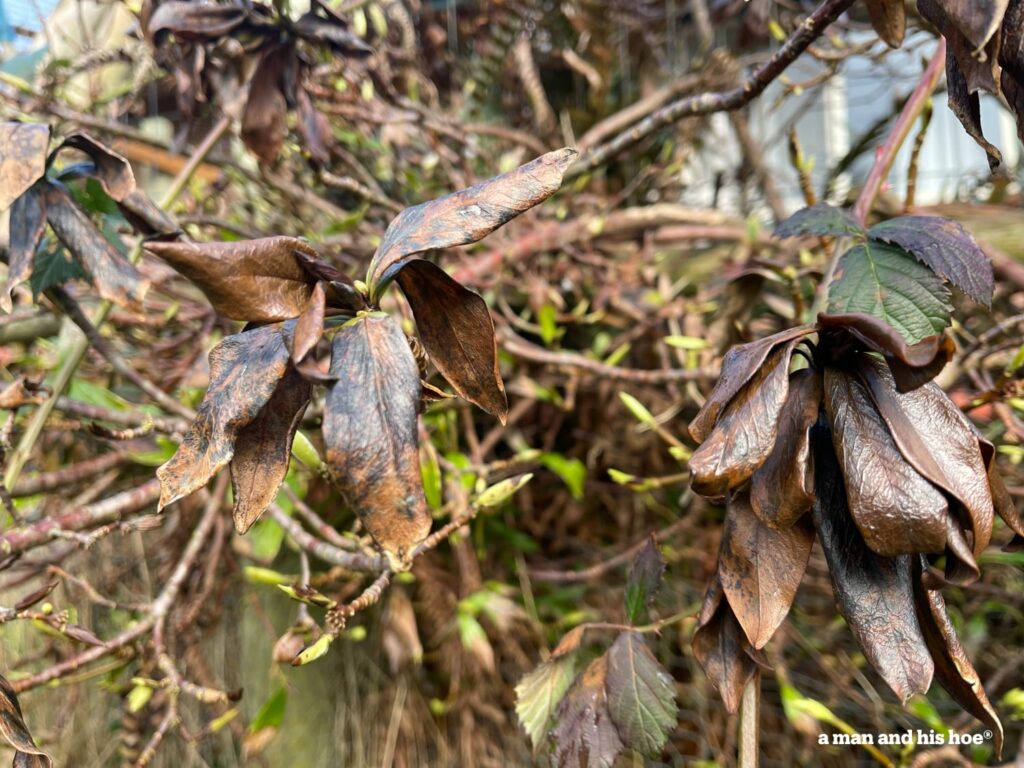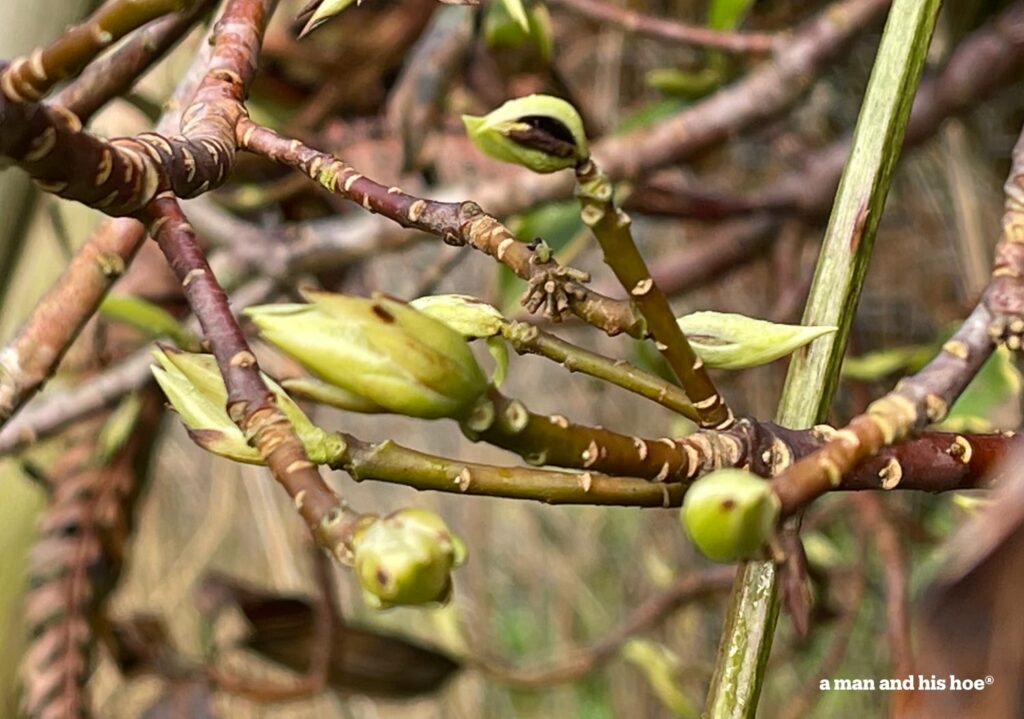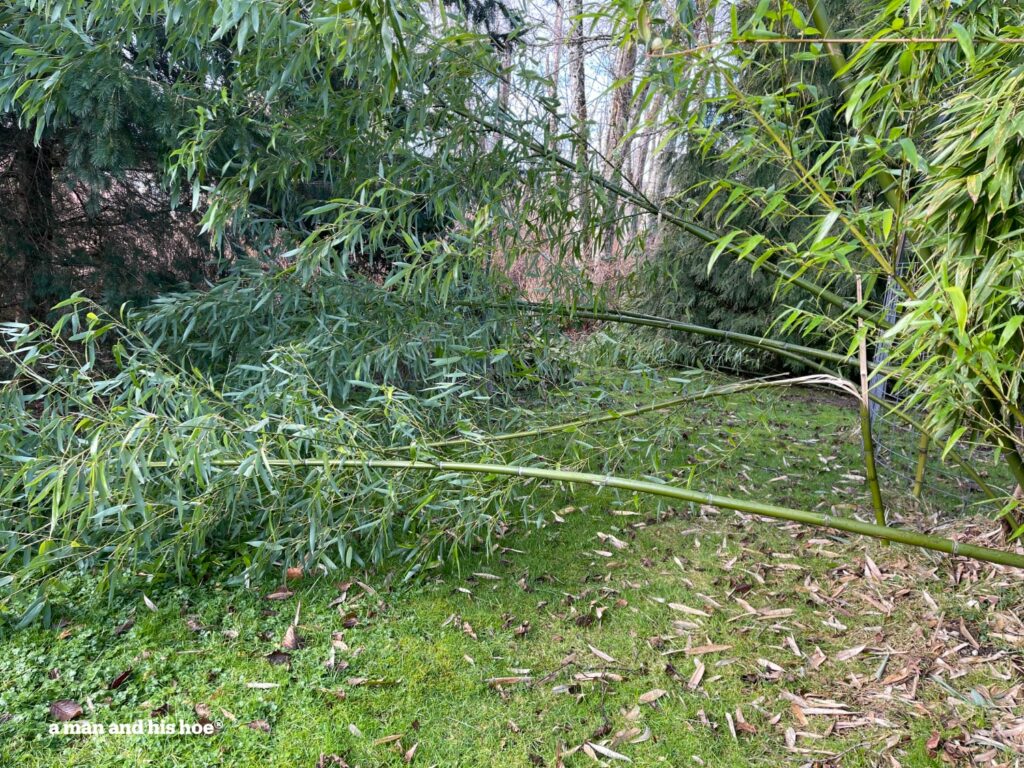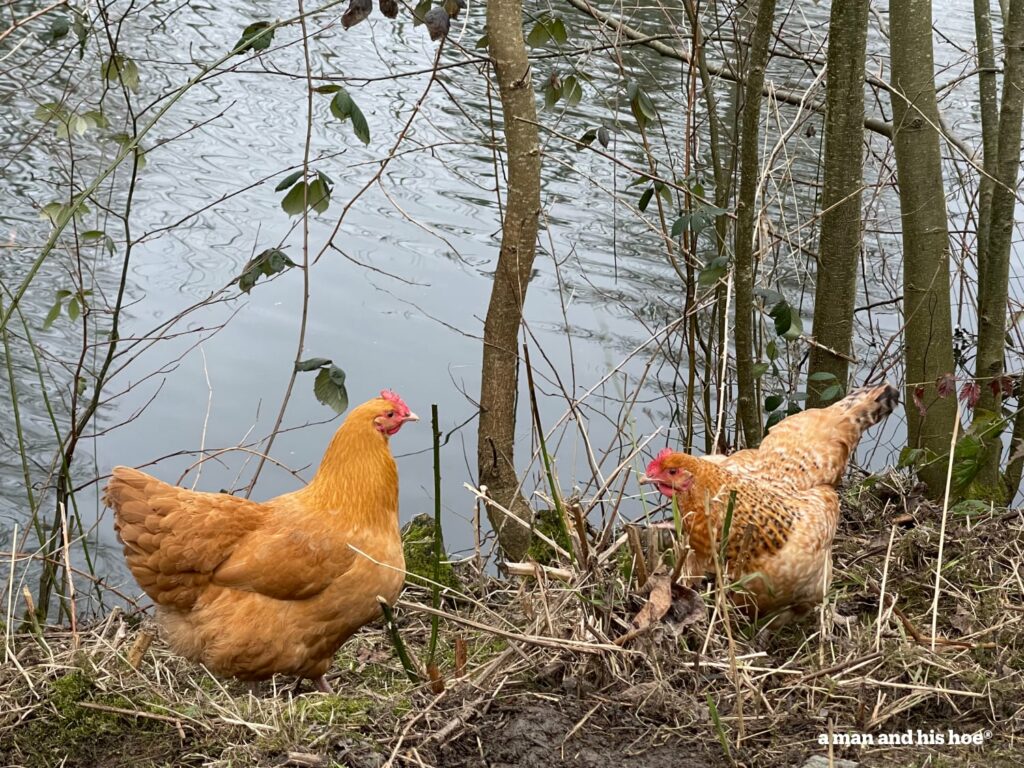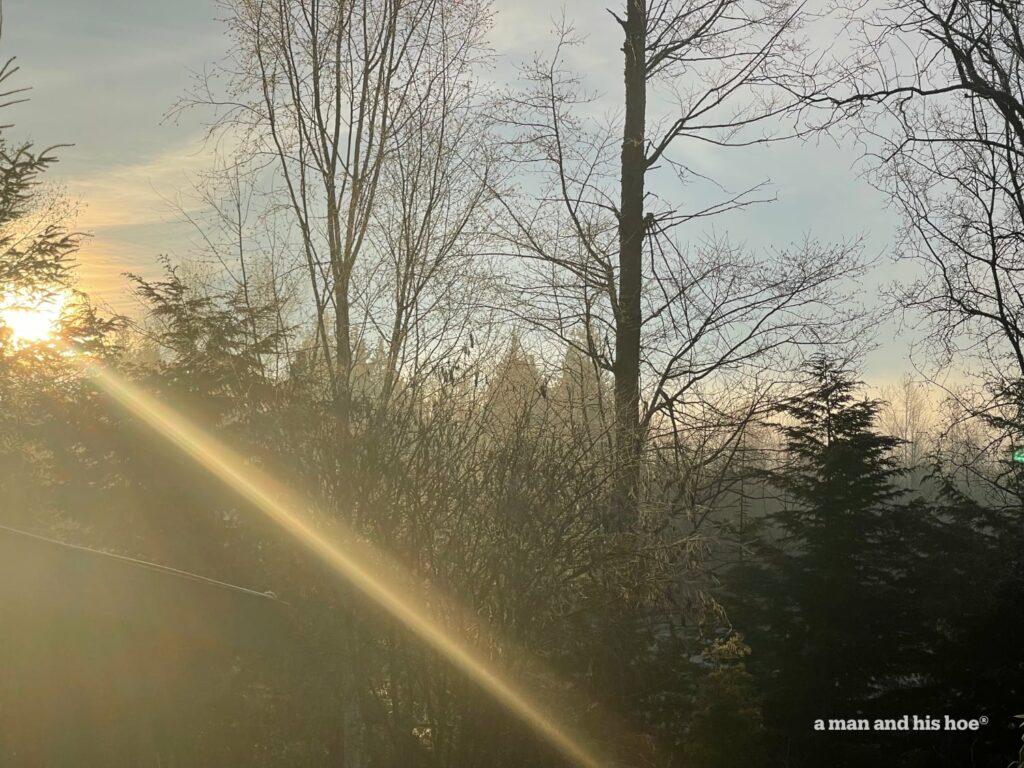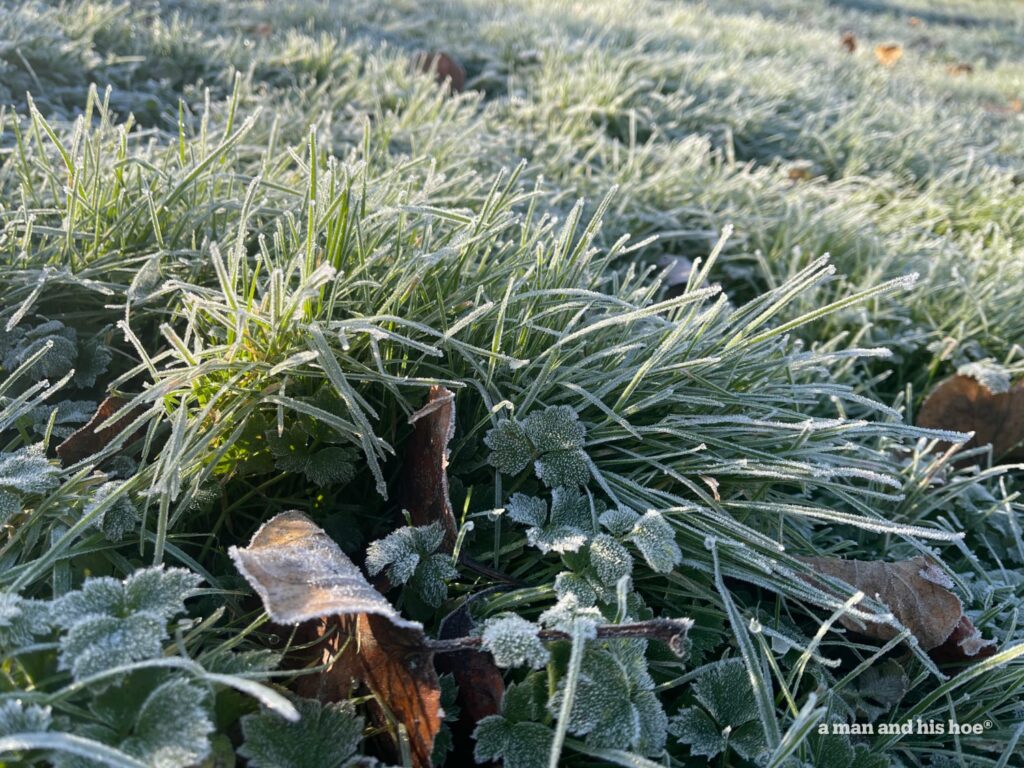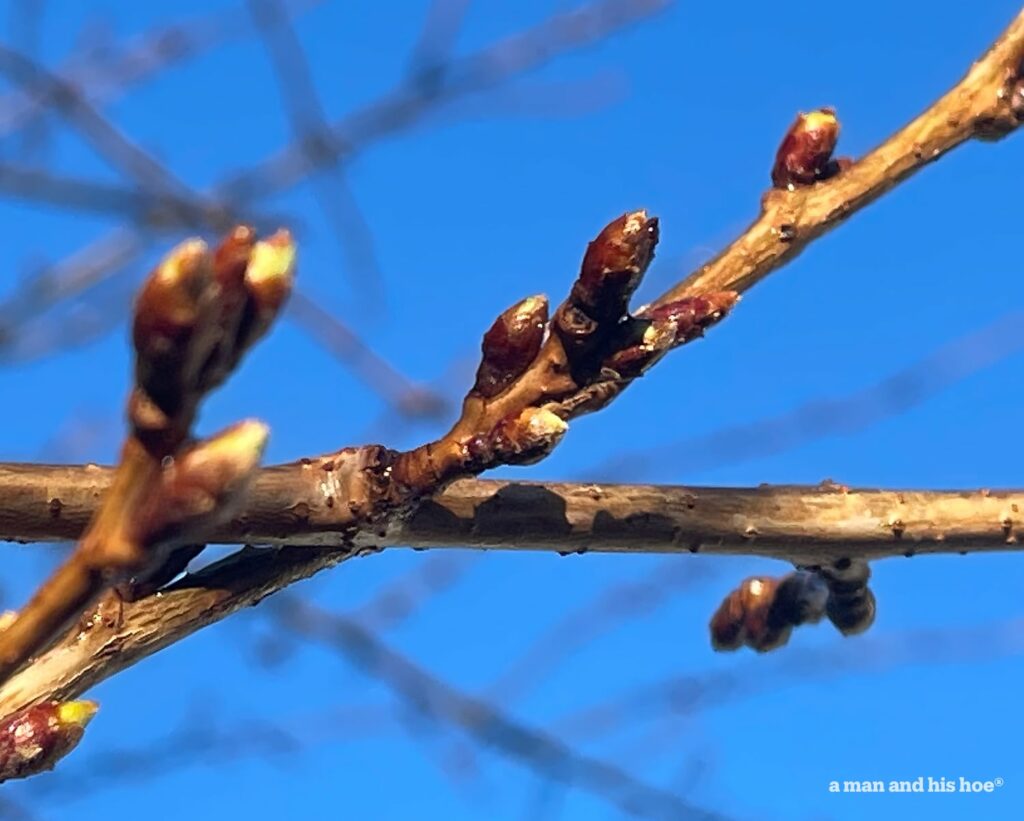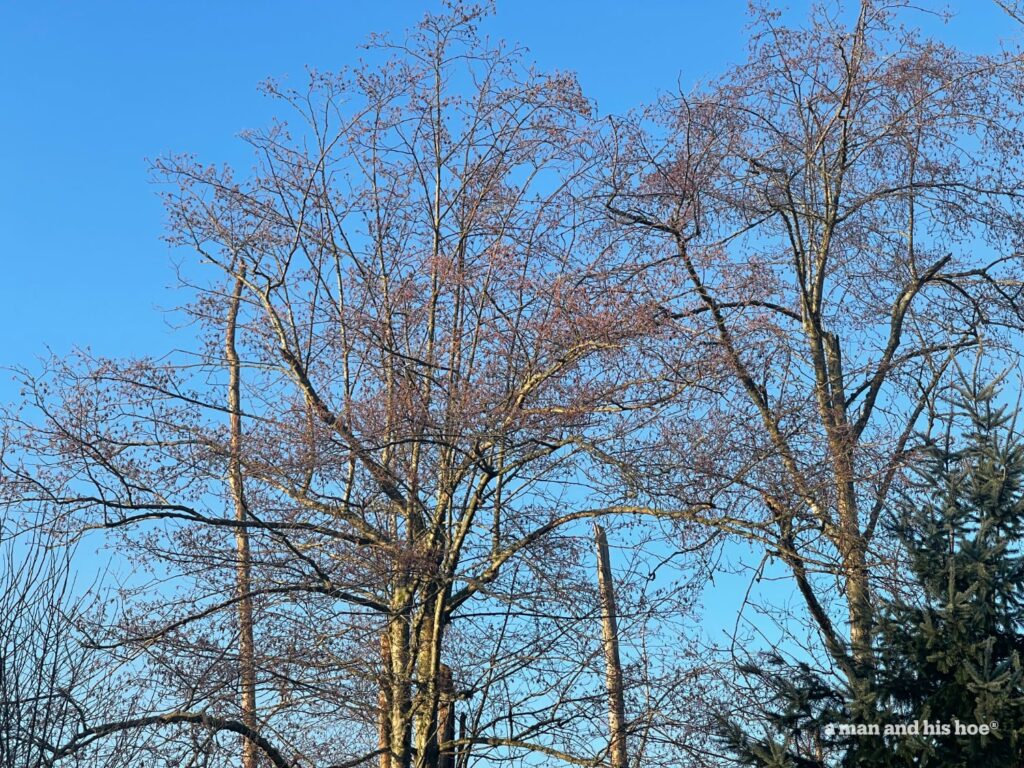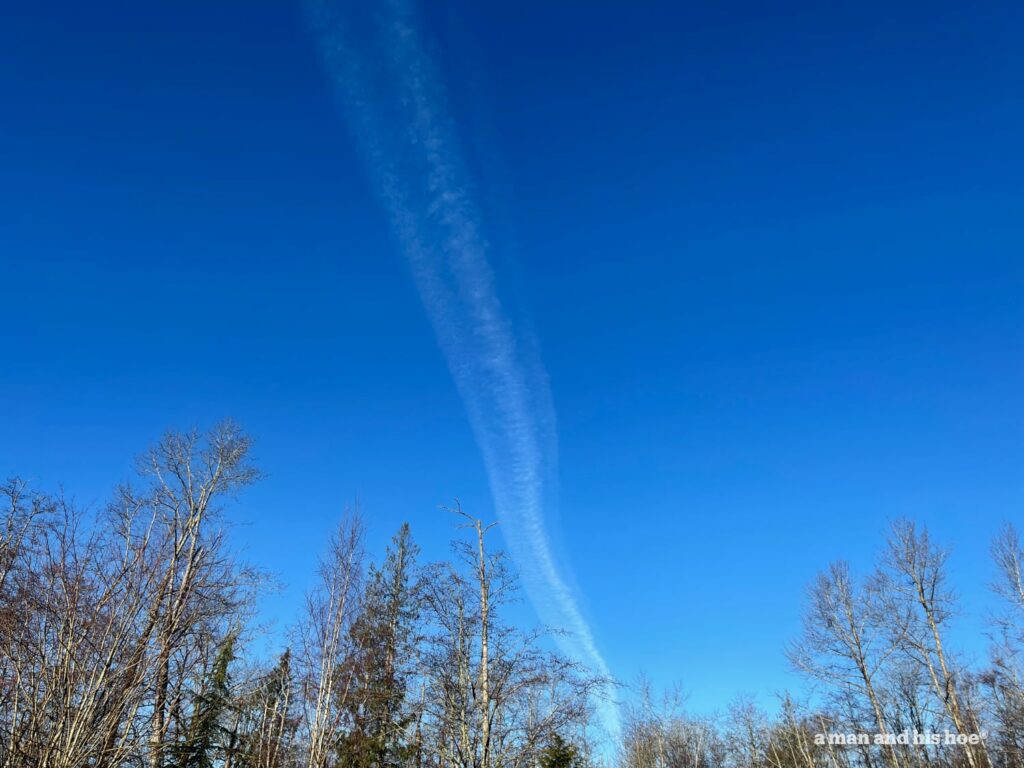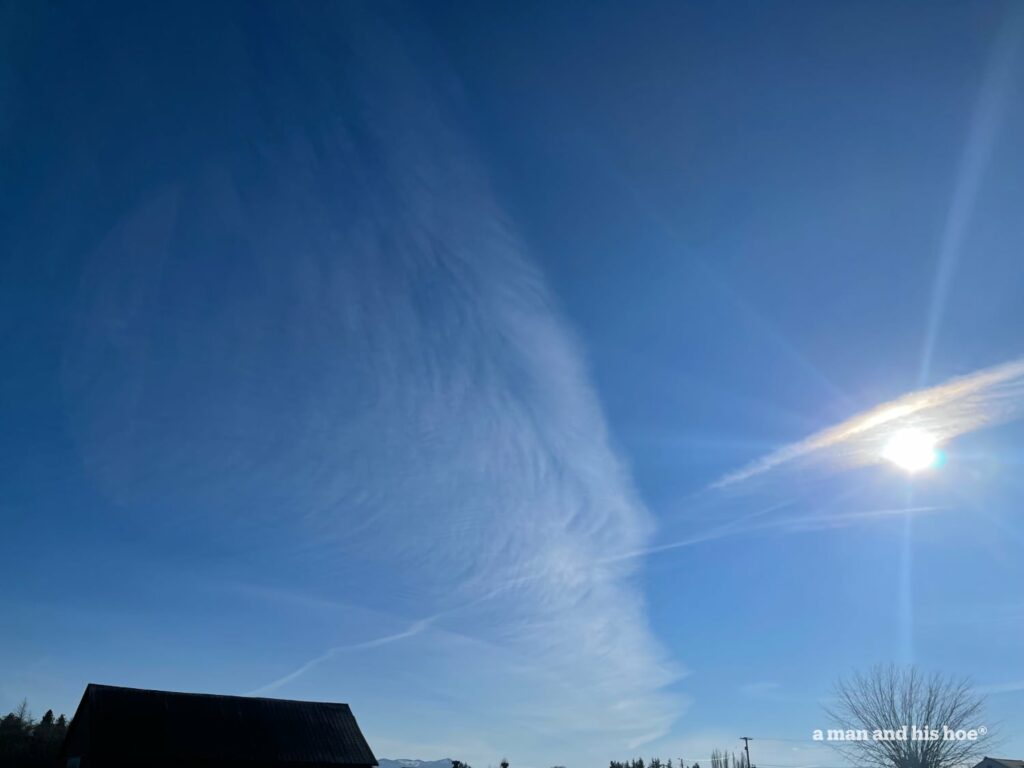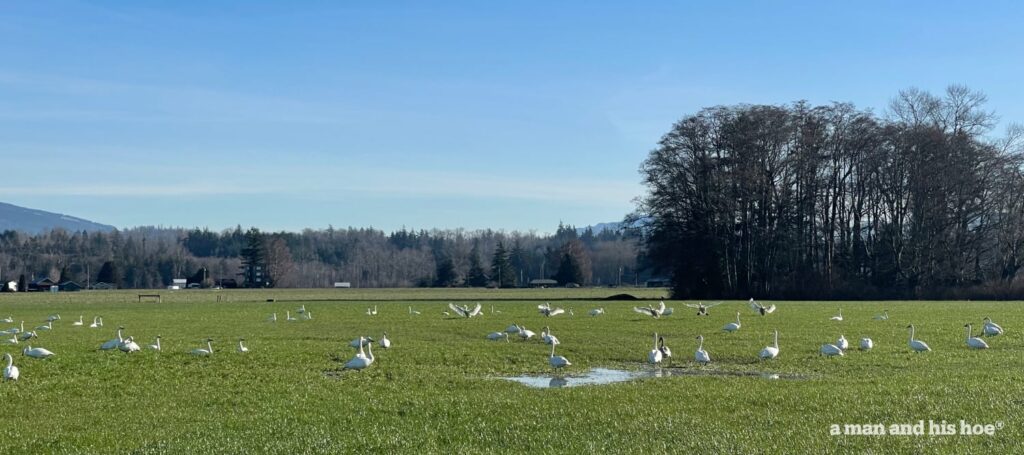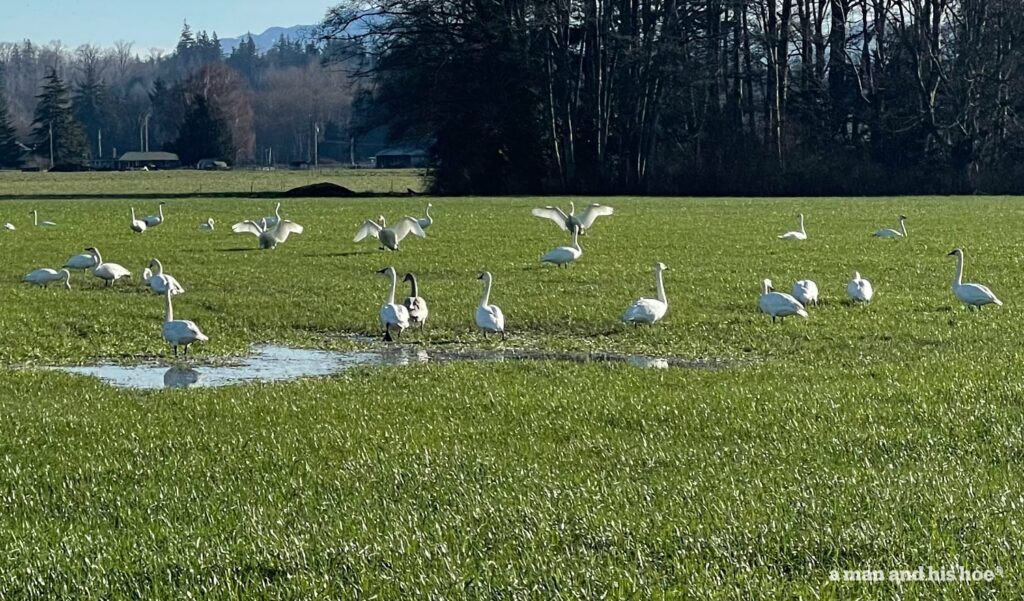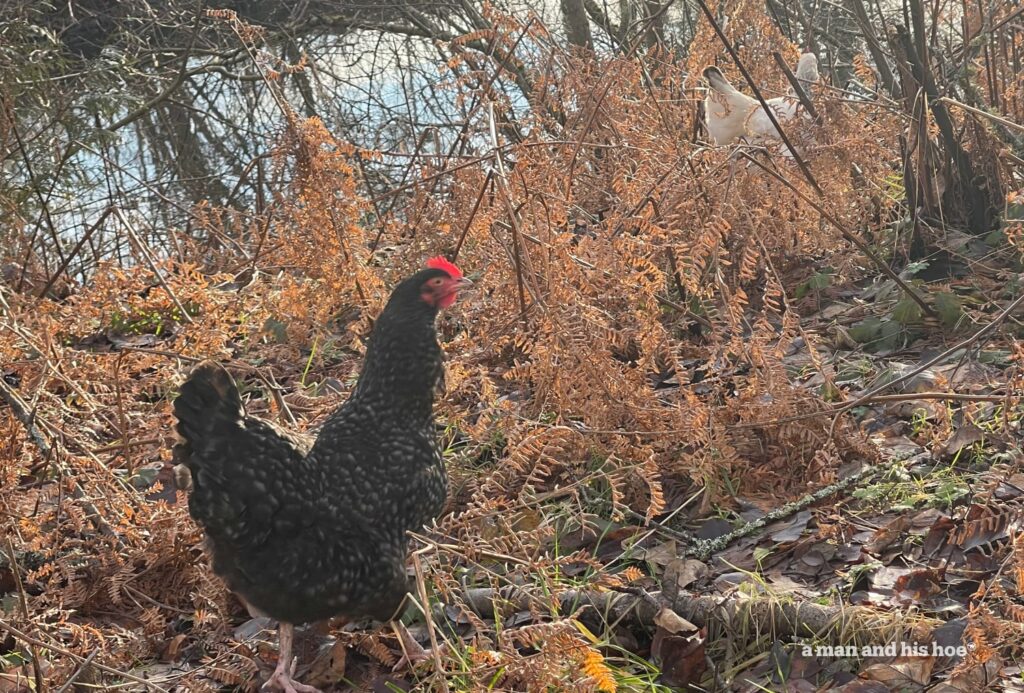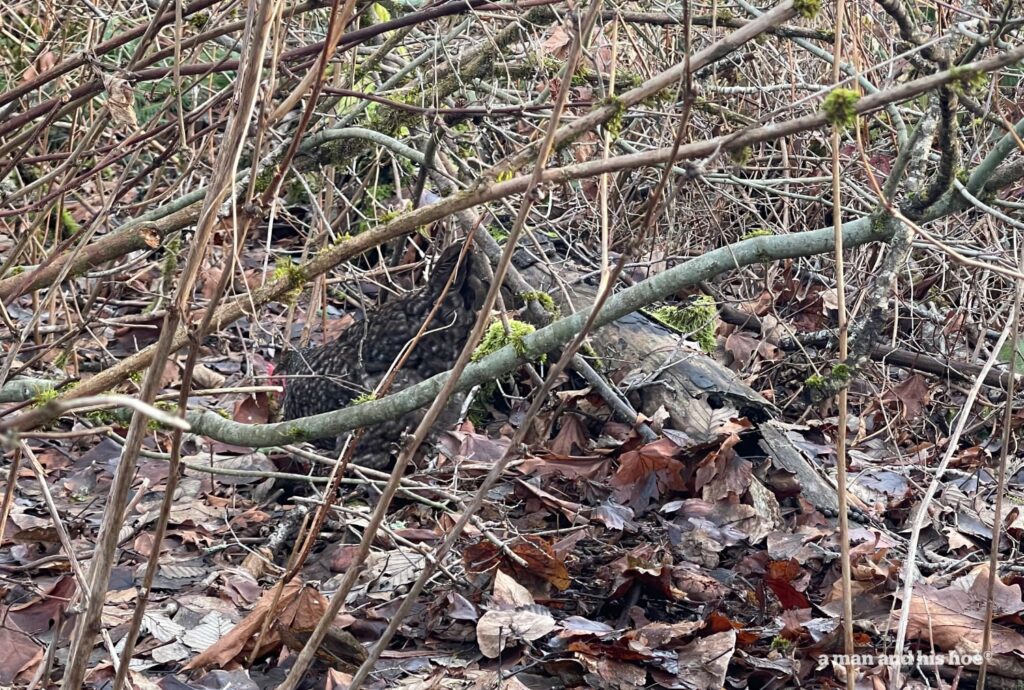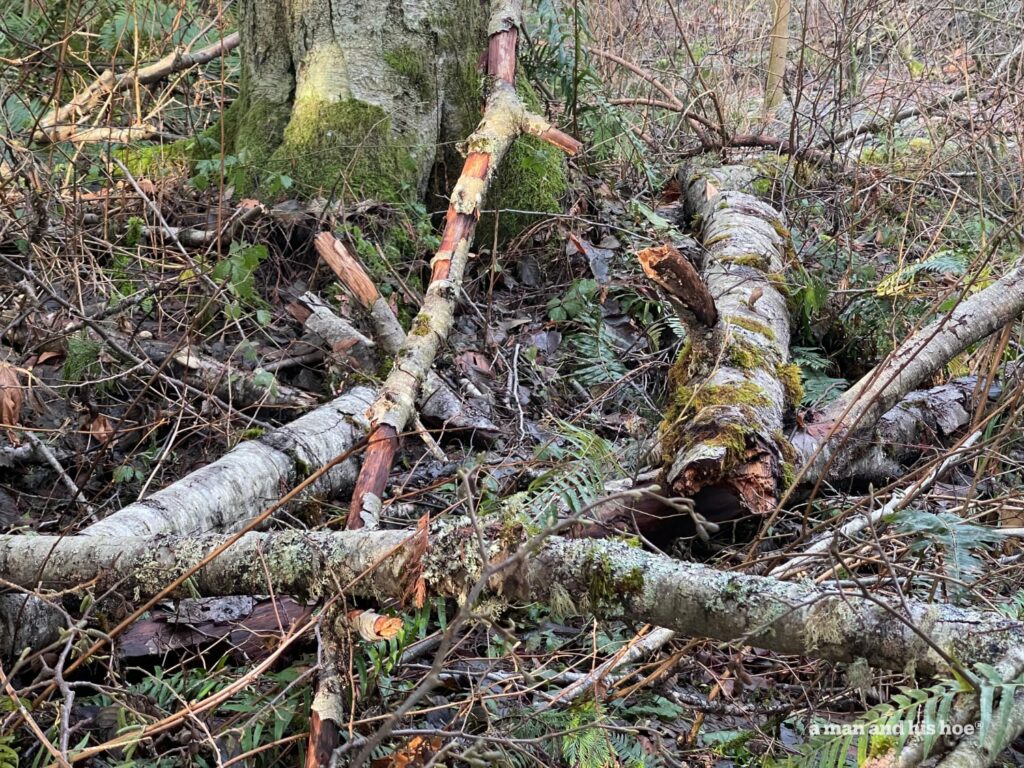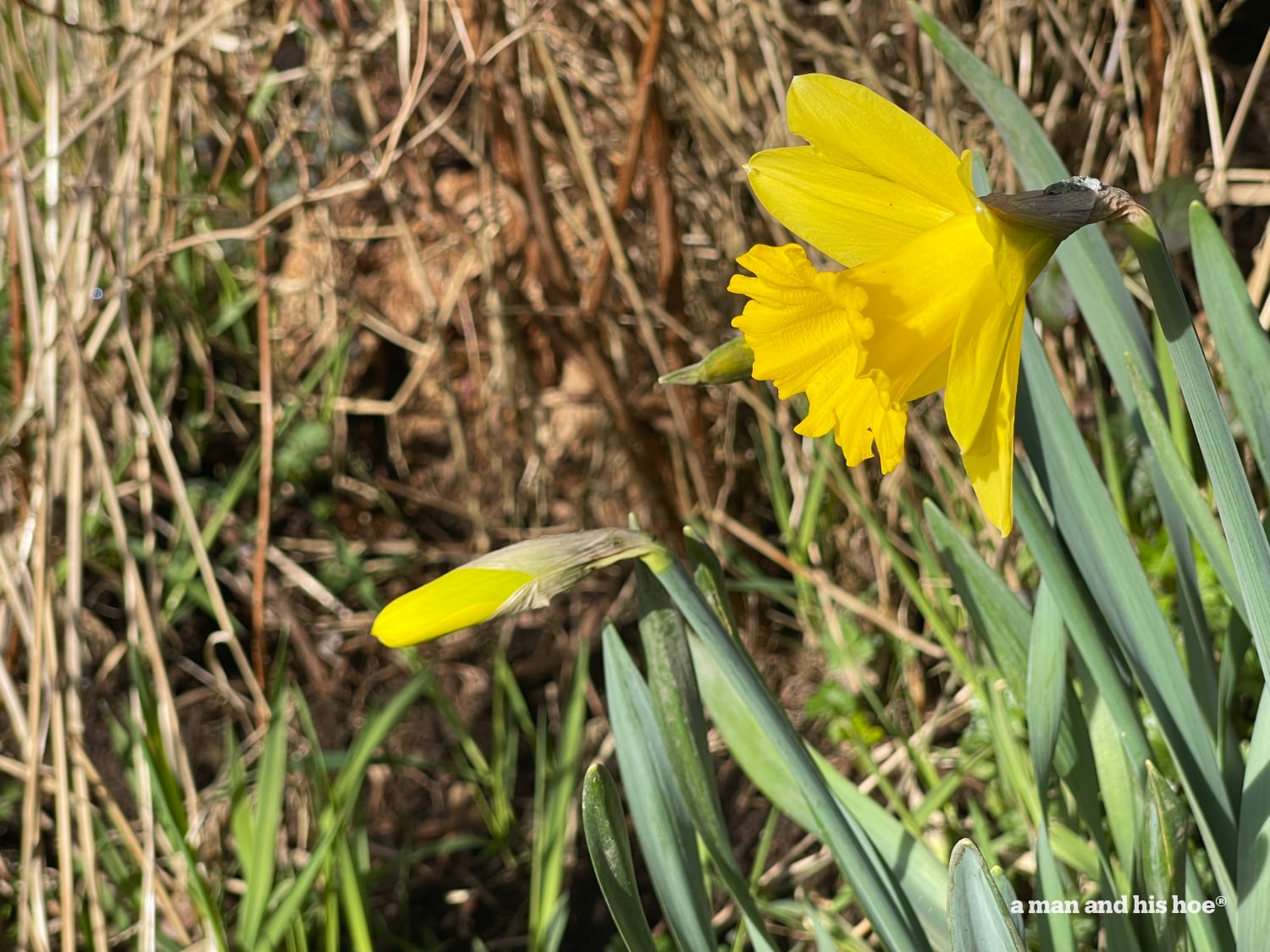
Spring unfolds slowly in the Pacific Northwest, which means there is more time for spring surprises. It should be no surprise that daffodils bloom in spring. Yet when they do it’s always a pleasant surprise.
A friend raises alpacas and she’s generously shared alpaca beans with me. They’re great for enriching the garden soil. Unlike many other types of animal droppings, you can use them directly without composting them. Their low nitrogen level won’t burn plants. Neither do alpaca beans contain weed seeds.
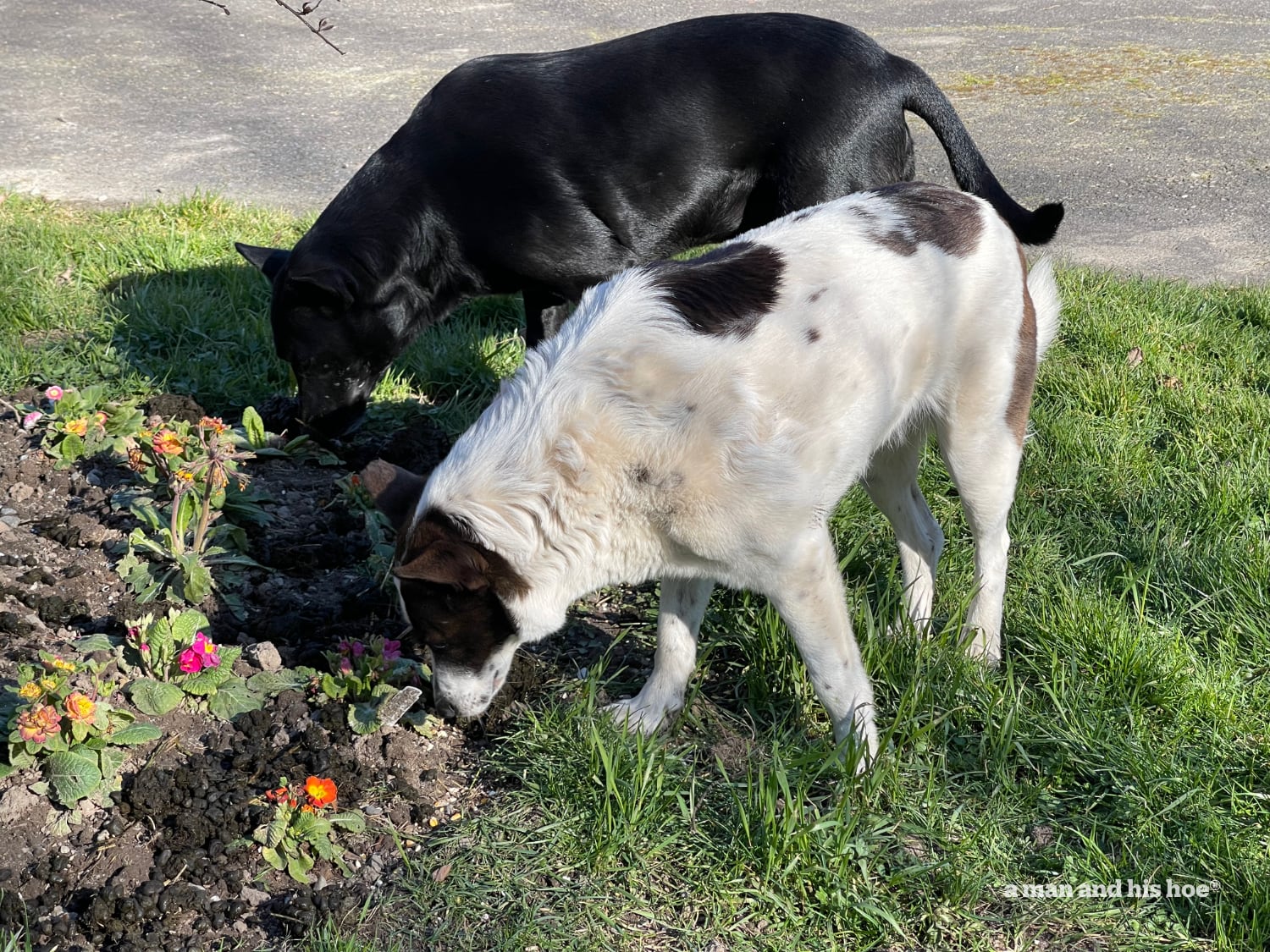
I spread some alpaca beans around some flowers and was surprised to discover that the dogs thought I had liberally spread dog treats all around just for them. They had a feast.
So if you raise alpacas and wonder what to do with all their droppings, try drying them out and giving them to your dog loving friends as dog treats. Put them in pretty bags and don’t tell your friends what they are until they beg you for the recipe. Your friends might disdain you, but their dogs will love you forever.
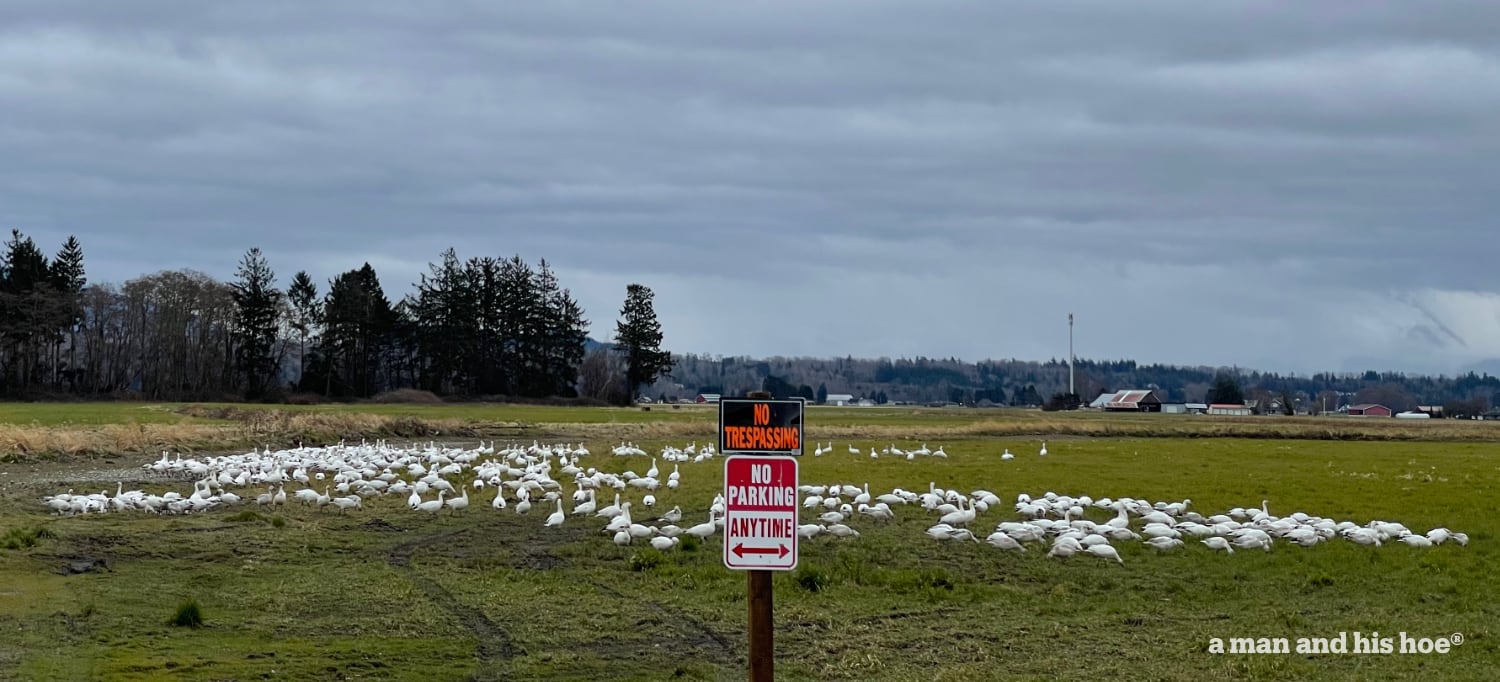
The sign says “No Parking” but the snow geese pay no attention. Huge flocks of snow geese covered pastures in the north Skagit River delta today. A few more weeks and they will be off, on their way to the Arctic.
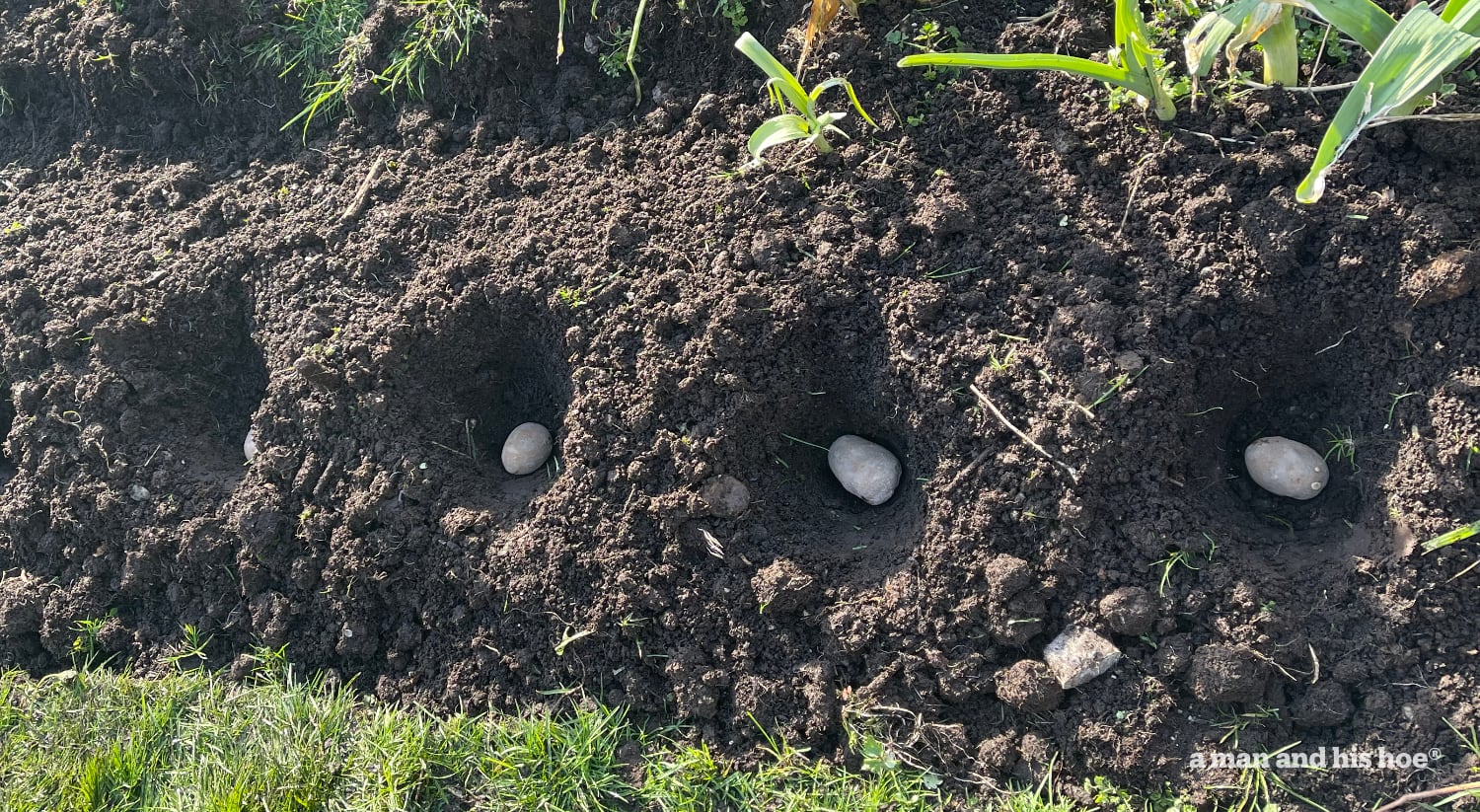
There should be more sunny days, so when they come along, they are a pleasant spring surprise. It’s the beginning of potato planting season. Seeing their first leaves poke out of the ground is always one of spring’s pleasant surprises.
